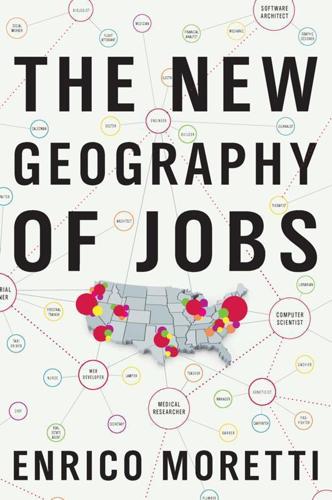
The New Geography of Jobs
by
Enrico Moretti
Published 21 May 2012
But in light of the experience of Germany and Spain, there seems to be little justification for subsidizing the actual physical production of solar panels. Where does all this leave Fremont? The city is still courting clean-tech employers and has exempted clean-tech companies from payroll taxes. Although the closing of Solyndra was a major setback, local growth is still driven by R&D-intensive clean-tech companies, along with new biotech and high-tech firms that have also cropped up in recent years. There are now twenty-five clean-tech firms in Fremont, up from six in 2006. While some of them depend at least in part on federal subsidies, others are operating purely on private venture capital.
…
But unlike Detroit, Fremont has been able to attract a number of clean-tech companies, some of which have opened in old manufacturing plants. In fact, the old NUMMI factory is now occupied by Tesla Motors, best known for its Roadster, the first serially produced highway-capable electric car available in the United States. For a while the future did not look grim. “You can’t throw a Frisbee in Fremont without hitting another solar company,” Dan Shugar, the chief executive of the solar power company Solaria, told the press in 2010. At the time, Lori Taylor, Fremont’s economic development director, was optimistic that clean-tech companies would eventually become the city’s new growth engine.
…
. [>] While there has been growth: Vara, “Red Flags for Green Energy.” [>] As noted by my colleague: Borenstein, “The Private and Public Economics of Renewable Electricity Generation.” [>] Many American companies keep their headquarters: Baker, “U.S. Solar Firms Lead in Installation.” [>] There are now twenty-five clean-tech firms: Vara, “Clean Tech Arrives.” [>] With two colleagues, I have studied: Greenstone, Hornbeck, and Moretti, “Identifying Agglomeration Spillovers”; Greenstone and Moretti, “Bidding for Industrial Plants.” [>] In 2010 a team of three economists: Busso, Gregory, and Kline, “Assessing the Incidence and Efficiency of a Prominent Place Based Policy.” [>] Assuming that most of the jobs: I am basing these calculations on the most recent version of the paper available at the time of writing (2011).
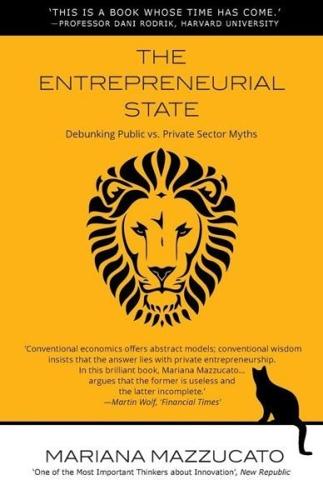
The Entrepreneurial State: Debunking Public vs. Private Sector Myths
by
Mariana Mazzucato
Published 1 Jan 2011
Available online at http://www.epa.gov/methane/ (accessed 8 October 2012). EPIA (European Photovoltaic Industry Association). 2012. Global Market Outlook for Photovoltaics until 2016. Brussels: European Photovoltaic Industry Association, May. Ernst & Young. 2011. ‘Cleantech Matters: Seizing Transformational Opportunities’. Global Cleantech and Trends Report 2011. Ey.com. Available online at http://www.ey.com/Publication/vwLUAssets/Cleantech-matters_FW0009/$FILE/Cleantech-matters_FW0009.pdf (accessed 29 January 2013). Evans, P. 1995. Embedded Autonomy: States and Industrial Transformation. Princeton, NJ: Princeton University Press. Evans, P. and J. Rauch. 1999. ‘Bureaucracy and Growth: A Cross-National Analysis of the Effects of “Weberian” State Structures on Economic Growth’.
…
E. and L. M. Branscomb. 2003. ‘Valleys of Death and Darwinian Seas: Financing the Invention of Innovation Transition in the United States’. Journal of Technology Transfer 28, nos. 3–4: 227–39. Baker, D. R. 2010. ‘Funding for Clean-Tech Firms Plunges 33% in ’09’. SfGate.com. Available online at http://articles.sfgate.com/2010-01-07/business/17470394_1_venture-funding-cleantech-group-venture-capitalists (accessed 6 June 2011). Bakewell, S. 2011. ‘Chinese Renewable Companies Slow to Tap $47 Billion Credit’. Bloomberg Business Week, 16 November. Available online at http://www.businessweek.com/news/2011-11-16/chinese-renewable-companies-slow-to-tap-47-billion-credit.html (accessed 26 January 2012).
…
‘G.E.’s Strategies Let It Avoid Taxes Altogether’. New York Times, 24 March. Available online at http://www.nytimes.com/2011/03/25/business/economy/25tax.html?_r=1&scp=1&sq=g.e.&st=cse (accessed 25 July 2012). Korosec, K. 2011. ‘Cleantech Saviour: US Military to Spend $10B Annually by 2030’. Smartplanet.com, 13 October. Available online at http://www.smartplanet.com/blog/intelligent-energy/cleantech-savior-us-military-tospend-10b-annually-by-2030/9593 (accessed 28 January 2013). Kraemer, K. L., G. Linden and J. Dedrick. 2011. Capturing Value in Global Networks: Apple’s iPad and iPhone’. Personal Computer Industry Center, University of California–Irvine.
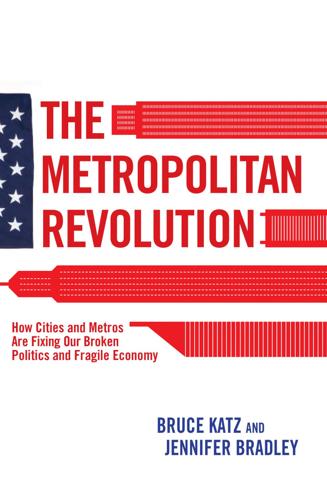
The Metropolitan Revolution: How Cities and Metros Are Fixing Our Broken Politics and Fragile Economy
by
Bruce Katz
and
Jennifer Bradley
Published 10 Jun 2013
See Mark Muro, Jonathan Rothwell, and Devashree Saha, “Sizing the Clean Economy: A National and Regional Green Jobs Assessment” (Brookings, 2011), p. 11. See also “Global Cleantech 100,” The Guardian, 2010 (www.guardian.co.uk/ globalcleantech100/cleantech-100-2010-list?CMP=twt_gu); Jonathan Rothwell and Mark Muro, “Where the Cleantech Companies Are,” New Republic: The Avenue, February 23, 2011; Jonathan Rothwell and Mark Muro, “Top of the Class: The Role of Leading Academic Programs in Cleantech Innovation,’’ New Republic: The Avenue, February 24, 2011. 42. Ibid. 43. Applied Sciences NYC, “Investing in Innovation for a Stronger Economy,” September 13, 2011 (http://nycedc.tumblr.com/post/10165992406/check-out-ourinfographic-that-illustrates-how).
…
The largest 100 metros 02-2151-2 ch2.indd 30 5/20/13 6:48 PM NYC: INNOVATION AND THE NEXT ECONOMY 31 in the United States are home to 78 percent of the jobs in solar energy, 80 percent in wind energy, and 83 percent of the jobs in energy research, engineering, and consulting services. They are also the site of fifty-four of the fifty-eight top-ranked high-impact U.S. clean technology firms on the 2010 Global Cleantech 100 list.41 Three-quarters of clean economy jobs created from 2003 to 2010 are located in large metros. Moreover, the clean economy is innovation intensive and thus plays to metropolitan area strengths.42 The city and the NYCEDC believe that the Applied Sciences initiative is already paying off.
…
To further boost the exports from its computers and electronics sector, the plan focuses on maintaining and protecting the location advantages that initially brought the cluster to the region, strengthening supply chain relationships within the industry, and providing early-stage incentives to industry spin-offs that have the potential for significant export growth. To build on the region’s strengths in sustainability, the plan has launched a major marketing campaign called We Build Green Cities to promote the region’s clean-tech companies and products as solutions for global clean-economy challenges.58 Portland’s export plan reflects a core understanding that looking abroad for growth is critical to the future of the metropolis. As Tom Hughes, the president of Portland’s Metro Council, says, “It’s not just us selling each other microbrews.

Boom: Bubbles and the End of Stagnation
by
Byrne Hobart
and
Tobias Huber
Published 29 Oct 2024
This contrasts sharply with narratives surrounding energy technologies characterized as “clean” and “renewable,” with their quasi-mystical connotations of purification, healing, and renewal. The cleantech bubble emerged during the mid-2000s with investments in solar, biofuels, batteries, and other renewable energy sources, and is perhaps one of the purest examples of a bubble driven by narrative. 282 “Salvation (and Profit) in Greentech,” a talk given by the venture investor John Doerr in 2007, perfectly encapsulates the core narrative of the cleantech bubble. In it, Doerr describes climate change as “the largest economic opportunity of the 21st century, and a moral imperative.” 283 This simultaneous belief in profits and salvation fueled the cleantech bubble, which burst just a year after Doerr’s speech, when the financial crisis simultaneously led to a collapse in oil prices and a dramatic reduction in investors’ appetite for high-risk projects.
…
By harnessing wind, waves, sun, and carbon, such technologies gave rise to imagery of purification, healing, and renewal—evinced by the terms “cleantech” and “renewable energy” themselves—in contrast to the entrenched imagery of crisis and pollution that nuclear energy and fossil fuels invoked. Like their nuclear predecessors, many founders and investors in cleantech are today motivated by a quasi-religious impetus. Elon Musk often invokes apocalyptic imagery when he talks about Tesla’s mission: It’s “very important to accelerate the transition to sustainable transport,” he argues, because otherwise “we’re all damned.” Or consider the way John Doerr characterizes the promise of cleantech: “If we face irreversible and catastrophic consequences, we must act, and we must act decisively.” 395 Like manned space flight, biotech, and AI, clean or renewable technologies harbor the promise of salvation and redemption for our corrupted and polluted Earth.
…
While the Manhattan Project and the Defense Advanced Research Projects Agency (DARPA) gave rise to nuclear energy and the internet, there are myriad examples of how government policies can not only inhibit progress but also result in massive failures. Think of SpaceX and its fight against Department of Defense procurement policies that systematically favor well-connected aerospace and defense incumbents, or ARPA–Energy’s attempts to pick a winner in so-called cleantech by subsidizing a select few startups (including the solar panel manufacturer Solyndra, which imploded spectacularly in 2011 after the cleantech bubble burst). It’s no wonder, then, that a nostalgic hopelessness, defeatist fatalism, or outright nihilism about the future has started to metastasize. On a deeper level, the absence of transcendental vision that characterizes our age has resulted in a general “future blindness,” in which the future has simply become the continuation of a never-ending present defined by uniformity, homogeneity, and a general lack of dynamism.
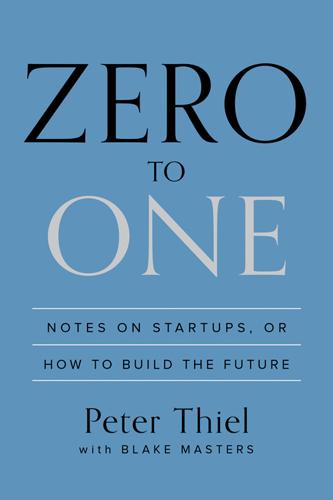
Zero to One: Notes on Startups, or How to Build the Future
by
Peter Thiel
and
Blake Masters
Published 15 Sep 2014
People got busy: entrepreneurs started thousands of cleantech companies, and investors poured more than $50 billion into them. So began the quest to cleanse the world. It didn’t work. Instead of a healthier planet, we got a massive cleantech bubble. Solyndra is the most famous green ghost, but most cleantech companies met similarly disastrous ends—more than 40 solar manufacturers went out of business or filed for bankruptcy in 2012 alone. The leading index of alternative energy companies shows the bubble’s dramatic deflation: Why did cleantech fail? Conservatives think they already know the answer: as soon as green energy became a priority for the government, it was poisoned.
…
But the striking thing about the cleantech bubble was that people were starting companies with zero good answers—and that meant hoping for a miracle. It’s hard to know exactly why any particular cleantech company failed, since almost all of them made several serious mistakes. But since any one of those mistakes is enough to doom your company, it’s worth reviewing cleantech’s losing scorecard in more detail. THE ENGINEERING QUESTION A great technology company should have proprietary technology an order of magnitude better than its nearest substitute. But cleantech companies rarely produced 2x, let alone 10x, improvements.
…
And compared to the total global power generation capacity of 15,000 gigawatts, your 100 megawatts is just a drop in the ocean. Cleantech entrepreneurs’ thinking about markets was hopelessly confused. They would rhetorically shrink their market in order to seem differentiated, only to turn around and ask to be valued based on huge, supposedly lucrative markets. But you can’t dominate a submarket if it’s fictional, and huge markets are highly competitive, not highly attainable. Most cleantech founders would have been better off opening a new British restaurant in downtown Palo Alto. THE PEOPLE QUESTION Energy problems are engineering problems, so you would expect to find nerds running cleantech companies.
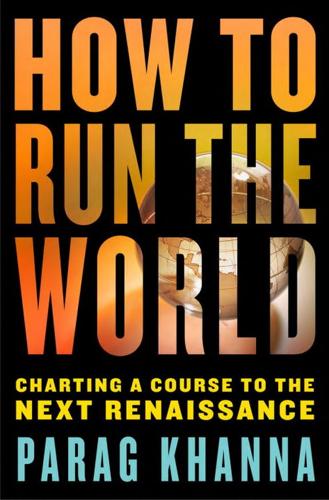
How to Run the World: Charting a Course to the Next Renaissance
by
Parag Khanna
Published 11 Jan 2011
In tackling both financial and energy crises simultaneously, the Obama administration is planning everything from a “green bank” to a clean energy development agency to provide more than $100 billion to fund clean-tech research and create jobs in solar cell installation (which takes more hands than running a power plant), to build commuter railways and smart grids, to expand the country’s natural gas infrastructure, and to reinsulate houses and buildings. The United States has at least 250,000 square miles of land in the Southwest alone that are suitable for solar plants. America’s high-tech and clean-tech communities are now coming together to design green infrastructures for the common man. Shai Agassi’s company Better Place has been designing an electric car infrastructure since well before Obama was elected, while local entrepreneurs and utilities are combining to make a thirty-foot-tall windmill with seven-foot blades the new must-have backyard accessory in as many as fifteen million homes.
…
The World Bank’s Clean Development Mechanism, which approves projects after third-party vetting, has given $200 million to Indian companies to upgrade their power plants, while the International Finance Corporation has boosted funding for gas refinery projects that are compliant with its eco-friendly Equator Principles. Progress in climate negotiations actually depends on emerging markets confidently adopting the technologies that will allow them to even bother showing up at summits. Until then, climate conference should be put on ice, and all the money put into clean-tech transfer funds. Were it not for the scientific community housed at major universities, diplomats would be pushing their target dates back for centuries to come. The Intergovernmental Panel on Climate Change has global credibility most of all because it has among its members scientists and scholars, not diplomats defending national interests.
…
China’s State Grid Corporation, the world’s largest public utility, has undertaken massive investments in wind and hydroelectric power, promising to generate 30 percent of its energy from renewable sources by 2030, and offered subsidies to cities to switch their taxi fleets to electric cars—of which Shenzhen-based BYD has already rolled out a fully Chinese-made line. The city of Baoding has declared itself a renewable city, sponsoring local firms to build wind and solar-cell farms. The diplomacy of curbing Chinese emissions is all about mayors, factory owners, party officials, and American clean-tech companies—all brought together by a nonprofit called the Joint U.S.-China Collaboration on Clean Energy, which knows that the supposedly insurmountable problem of reducing China’s emissions comes down to convening these players to find win-win deals. Even at the factory level, where owners are often in bed with local politicians, old and inefficient plants are being replaced with new ones equipped with CO2 scrubbers.
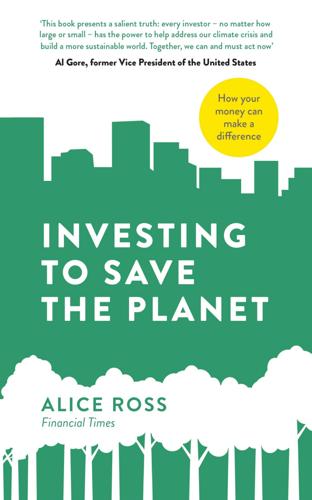
Investing to Save the Planet: How Your Money Can Make a Difference
by
Alice Ross
Published 19 Nov 2020
Unfortunately, good ideas do not always equal good investments. A 2016 report from MIT found that venture capital firms spent over $25bn funding clean energy technology start-ups between 2006 and 2011 and lost over half their money. As a result, it warned, funding had dried up in the cleantech sector. A new dawn for cleantech? Energy investors claim it is different this time. For one thing, renewable energy costs have come down substantially and are now comparable to mainstream energy. Even in 2013, US wind and solar costs were not commercial without subsidies. By 2018, they had more than halved.
…
The companies in the group’s portfolio include Massachusetts-based Malta, which converts electricity from the grid into heat, stores it in molten salt, then converts it back to electricity and returns it to the grid when needed. Another company, Quidnet Energy, uses wells to store energy as pumped hydro, avoiding the need for mountains or lakes. Cleantech investment highlights some ways in which investing in climate change solutions can be different to traditional investments. Recognising that cleantech can take a long time to develop successfully, the Breakthrough Energy fund has a time horizon of 20 years when it makes an initial investment. This makes it different from other early-stage investors. Normally venture capital or private equity investors expect to get a return on their investment – usually through the sale of the private company or when it lists on the stock market – within 10 years.
…
Normally venture capital or private equity investors expect to get a return on their investment – usually through the sale of the private company or when it lists on the stock market – within 10 years. Part of BEV’s strategy is to give cleantech companies more time than normal investors would. A typical tech investor in Silicon Valley investing in a new, unproven technology might give the company a little money and a little time, and see how it does. That might be half a million dollars over six months. With cleantech, says Eric Toone at BEV, it needs to be more like $30m over five years. Unproven technology is a huge risk. There will be winners, but there will also be losers, and there is no way of telling for sure at the start.

The Power Law: Venture Capital and the Making of the New Future
by
Sebastian Mallaby
Published 1 Feb 2022
Kleiner had effectively embraced the opposite of the philosophy at Accel, which believed in recruiting hungry up-and-comers and training them.[47] This change in Kleiner’s culture set the stage for the cleantech fiasco. When Doerr decided to bet the franchise on a challenging sector, nobody was there to check him. Compton and Mackenzie were especially missed: they were openly skeptical of cleantech, regarding it as too capital intensive, too slow to mature, and too hostage to the whims of government regulation. With the benefit of hindsight, Compton even argued that the cleantech error violated the lessons handed down by Tom Perkins himself. Far from going all in on high-stakes bets, Perkins had used small amounts of capital to eliminate the main risks in a venture—the “white-hot risks,” as he called them.
…
As Lee, Vassallo, and Pao suspected, partnerships that relied on clubby informality were bad for women.[65] John Doerr’s idealism was sincere and mostly admirable. He believed passionately that VC-fueled innovation was a force for good, which made cleantech irresistible. He was right that the Valley’s near exclusion of women represented wasted talent and was socially untenable. By throwing his energy behind cleantech and female advancement, he shoved history forward. A few cleantech investments worked out—Nest’s smart thermostats, for example—and the early failures helped to clear the way for the more successful second wave. Likewise, Doerr’s hiring of women ultimately worked out for the women, even if Kleiner failed to capture the results of their talent: by 2020, four ex-Kleiner women were running their own venture firms, and three were ranked among the top hundred VCs globally.[66] But by embracing change without slogging through the detailed work of implementing it, Doerr almost destroyed his firm.
…
Green technologies—going green—is bigger than the Internet.”[37] Whatever its existential importance, cleantech was a tough field for venture investors, and Doerr should not have suggested that large markets were the same as profitable ones. Startups working on wind power, biofuels, or solar panels were capital intensive, heightening the risk of losing large sums; their projects took years to mature, depressing annual returns on the few that succeeded. To compensate for the large capital requirements and long time frames, cleantech investors could in theory have invested at lower valuations and demanded additional equity for their money.
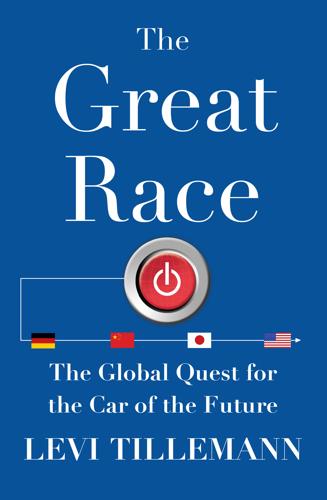
The Great Race: The Global Quest for the Car of the Future
by
Levi Tillemann
Published 20 Jan 2015
On August 5, 2009, A123 was awarded its grant from the DOE. The next month the stock made its initial public offering, raising almost $400 million, and by October the company’s market capitalization had climbed to $2.3 billion—trading at $25 per share.29 For a time, A123 looked like the ultimate clean-tech success story. But by the end of 2010, A123 stock had plunged more than 90 percent to about two dollars.30 And things were about to get worse. In early 2012 it announced the recall of $55 million worth of faulty battery packs sold in Fiskers and other vehicles.31 And by the summer of 2012, A123 was headed for bankruptcy.
…
The Obama administration was lumping GM’s survival together with bin Laden’s demise within its pantheon of achievements. So it clearly meant to sustain its focus on America’s auto sector. On the other hand, if Romney won the presidency, there was little doubt that he would seek to withdraw government support for EV innovation and deployment. Romney embraced the Republican narrative of a bankrupt clean-tech sector. He even called Tesla a “loser”—lumping it together with the failed solar company Solyndra and a struggling, soon to be defunct, Fisker. The businessman candidate was rooting, very publicly, against one of America’s most innovative and promising companies. So for EV enthusiasts all over the world, Mitt Romney’s wistful late-night admission on November 6 that his wife, Ann, “would have been a wonderful first lady” came as an intense relief.
…
As CNOOC had surveyed the technology landscape in 2008, something called “battery swapping” had caught its fancy. Battery swapping allowed an EV driver to change a used battery for a new battery—like you would change the battery in a flashlight. In the West, battery swapping was almost exclusively the province of the luminary clean-tech startup Better Place, which was founded by former SAP executive Shai Agassi. The history of Better Place, as told by Agassi, is that since the mid-2000s he had been wrestling with the problem of “how do you run a whole country without oil.” Then “on a random visit to Tesla . . . . [he] suddenly found out that the answer comes in separating between car ownership and battery ownership.”14 Agassi’s big idea was that by creating a system where electric vehicles could swap out spent batteries easily, he could surmount many of the cost and range issues inherent to EV technology.
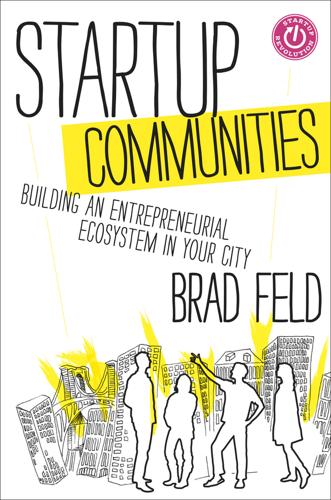
Startup Communities: Building an Entrepreneurial Ecosystem in Your City
by
Brad Feld
Published 8 Oct 2012
Participants in the CU New Venture Challenge didn’t have to attend these discussions, but this provided a platform for those who needed help. The classes were high impact for many students as well as for entrepreneurs in the community who attended these lectures. In recent years, we further tailored the courses to the subject matter of the companies and have introduced separate tracks for information technology, cleantech, music, and social entrepreneurship. Finally, the CU New Venture Challenge created a community pipeline through a mentorship program. Each participating team is offered a mentor with relevant background in the team’s area. Mentors agree to take at least two meetings with their assigned team. This allows great relationships to go forward by choice, but gives unproductive relationships a stop date.
…
Initially we added about 10 companies a year. With our increased resources, we now plan to add 30 companies a year. We have expanded our program to include a 1 percent of profit model for non-VC backed companies; our geography to include Fort Collins, Denver, and Colorado Springs; and our industries to include bio, cleantech, and LOHAS. The power in the Entrepreneurs Foundation model is to connect startup efforts to the community right now, when it is easy. The result of this will be stronger communities, stronger businesses, stronger leaders, and more success at creating an entrepreneurial and empathetic society. That is the kind of place I want to live and work.
…
In this chapter, we’ll explore some of these weaknesses along with what some of the leaders in the Boulder startup community are doing to address them over the next 20 years. PARALLEL UNIVERSES Although Boulder has an incredible entrepreneurial density, it actually has five startup communities. I’m involved in the tech community, which I often refer to as software/Internet for clarity. The other four are biotech, cleantech, natural foods, and lifestyles of health and sustainability (LOHAS). Let’s focus on the natural-foods startup community. Celestial Seasonings, started in the 1960s, is one of Boulder’s favorite natural foods companies, but did you know that two companies—Alfalfa’s and Wild Oats—which make up about a third of Whole Foods, were started in Boulder?

Brilliant, Crazy, Cocky: How the Top 1% of Entrepreneurs Profit From Global Chaos
by
Sarah Lacy
Published 6 Jan 2011
The hard work was no longer technical, which had always been the Val ey’s forte; it was amassing large audiences and innovating new advertising models to sustain them. Many people hoped that cleantech could be the new computer, and indeed Barack Obama talked this up in his 2008 Presidential debates as a way to fix the economy. There were plenty of opportunities to change the way we use and generate electricity, and done correctly it could be a huge market. But cleantech represented two things venture capitalists hate: investing in so-cal ed science fair projects where hundreds of mil ions could be spent before you’d even know if you had a product, and having to be dependent on the government.
…
In one swoop, Margalit is trying to create a new industry and give the old one a new reason to exist. How’s that for profitable patriotism? Other Israelis, like Agassi, are turning to cleantech as the new hope. After al, it plays to Israel’s uniquely endemic strengths. The country is replete with the main ingredients for solar power—sun, sand, and a knack for solving difficult technical problems. Israel has another edge when it comes to cleantech: It’s difficult to find a place much more determined to reduce its dependence on Arab oil. There’s something poetic about Israel creating the next wave of innovation that could erode its enemies’ revenues.
…
But cleantech represented two things venture capitalists hate: investing in so-cal ed science fair projects where hundreds of mil ions could be spent before you’d even know if you had a product, and having to be dependent on the government. There was inevitably going to be a few decades where the costs of remaking our electrical lives would be prohibitive for most consumers, and hence would have to be subsidized by something like tax incentives. A lot of VCs talked a good game about cleantech, but most of the investments were lower-capital plays that only nibbled at the core problems, like a software system for better routing electricity around large retail chains. A glaring exception was Elon Musk, one of the founders of PayPal and an immigrant from South Africa. While his fel ow PayPal alums plowed their money back into the Web 2.0 world—funding or starting companies like Facebook, LinkedIn, YouTube, Slide, and Yelp—Musk built a rocket company cal ed SpaceX, a solar panel company cal ed SolarCity, and an electric car company cal ed Tesla.
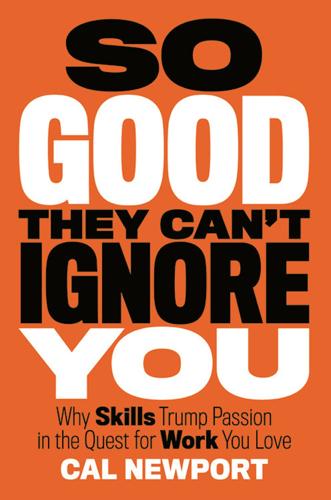
So Good They Can't Ignore You: Why Skills Trump Passion in the Quest for Work You Love
by
Cal Newport
Published 17 Sep 2012
What this story lacks in pizazz, it makes up in repeatability: There’s nothing mysterious about how Alex Berger broke into Hollywood—he simply understood the value, and difficulty, of becoming good. The Most Desirable Job in Silicon Valley Mike Jackson is a director at the Westly Group, a cleantech venture capital firm on Silicon Valley’s famous Sand Hill Road. To say that Mike has a desirable job is an understatement. “I have a friend who recently had dinner with the dean in charge of a top-tier business school,” he told me. “And at this dinner, the dean said that everyone in their graduating class right now wants to be a cleantech VC.” Mike has experienced this firsthand: He receives dozens of e-mails from business school students asking him about his path.
…
Chapter Six The Career Capitalists In which I demonstrate the power of career capital in action with two profiles of people who leveraged the craftsman mindset to construct careers they love. Two Career Capitalists Alex Berger is thirty-one: He’s a successful television writer and he loves his work. Mike Jackson is twenty-nine: He’s a cleantech venture capitalist and he also loves his work. This chapter is dedicated to telling their stories, as they both highlight the somewhat messy reality of using the craftsman mindset to generate fantastic livelihoods. Alex and Mike both focused on getting good—not finding their passion—and then used the career capital this generated to acquire the traits that made their careers compelling.
…
What interests me about Mike is that, like Alex Berger, he didn’t arrive at his outstanding job by following a clear passion. Instead he carefully and persistently gathered career capital, confident that valuable skills would translate into valuable opportunities. Unlike Alex, however, Mike started gathering capital before he knew what he wanted to do with it. In fact, he had never given a moment’s thought to cleantech venture capital until a couple weeks before his first interview. How Mike Jackson Became a Venture Capitalist Mike majored in biology and earth systems at Stanford. After earning his bachelor’s degree, Mike elected to stay for a fifth year to earn a master’s. The professor who supervised his master’s was trying to decide whether or not to launch a major research project studying the natural-gas sector in India, so he arranged Mike’s thesis to act as an exploration of the project’s viability.

Elon Musk: Tesla, SpaceX, and the Quest for a Fantastic Future
by
Ashlee Vance
Published 18 May 2015
It’s just that there was this Elon Musk guy hanging around who seemed to have figured something out that everyone else had missed. “We had a blanket rule against investing in clean-tech companies for about a decade,” said Peter Thiel, the PayPal cofounder and venture capitalist at Founders Fund. “On the macro level, we were right because clean tech as a sector was quite bad. But on the micro level, it looks like Elon has the two most successful clean-tech companies in the U.S. We would rather explain his success as being a fluke. There’s the whole Iron Man thing in which he’s presented as a cartoonish businessman—this very unusual animal at the zoo.
…
Musk helped come up with the idea for SolarCity and serves as its chairman, while his cousins Lyndon and Peter Rive run the company. SolarCity has managed to undercut dozens of utilities and become a large utility in its own right. During a time in which clean-tech businesses have gone bankrupt with alarming regularity, Musk has built two of the most successful clean-tech companies in the world. The Musk Co. empire of factories, tens of thousands of workers, and industrial might has incumbents on the run and has turned Musk into one of the richest men in the world, with a net worth around $10 billion. The visit to Musk Land started to make a few things clear about how Musk had pulled all this off.
…
(Politicians from Nevada, Texas, California, New Mexico, and Arizona threw themselves at Musk over the battery factory, with Nevada ultimately winning the business by offering Tesla $1.4 billion in incentives. This event confirmed not only Musk’s soaring celebrity but also his unmatched ability to raise funds.) SolarCity has created thousands of white- and blue-collar clean-tech jobs, and it will create manufacturing jobs at the solar panel factory that’s being built in Buffalo, New York. All together, Musk Co. employed about fifteen thousand people at the end of 2014. Far from stopping there, the plan for Musk Co. calls for tens of thousands of more jobs to be created on the back of ever more ambitious products.

The Quest: Energy, Security, and the Remaking of the Modern World
by
Daniel Yergin
Published 14 May 2011
The sheer scale of the opportunity was very compelling. In its analysis, Kleiner Perkins estimated that the total annual information technology market was $1 trillion a year, while that for energy was $6 trillion. The entry of venture capital into cleantech has gone from the trickle to the veritable flood. Investment in the U.S. cleantech industry went from $286 million in 2001 to $3.7 billion in 2010—a rise of more than ten times. In 2010 cleantech represented 17 percent of total VC investment in the United States.16 “MIT IS DOING ENERGY” Robert Metcalfe is one the legends of the information technology business. He invented the Ethernet, which makes possible the LANs—local area networks—that link computers in offices and homes.
…
They also provide the mechanism for folding higher-cost renewable energy into the overall power portfolio, although some foresee a reaction to rate shock on the part of consumers owing to the higher costs of renewables.22 CLEANTECH The rising prices for energy, beginning around 2003 and 2004, helped propel accelerated growth of, and support for, renewables in the United States. It also, at least for a time, narrowed the cost gap between renewable and conventional energy. Climate change became a much more explicit part of energy policy. As a result of all these factors, investment in renewables increased dramatically. As venture capital began investing in the sector, renewables gained yet another new name—“cleantech.” And providing confirmation that renewables were moving into the mainstream, investment banks established “clean energy” teams and began to distribute cleantech research.23 But as the Great Recession of 2008 broke, it hit renewables hard.
…
The administration responded to the financial crisis and ensuing recession with a massive economic stimulus program, a significant part of which was aimed at renewables and cleantech. Other countries rushed to support their own faltering economies through fiscal stimulus—or government spending—and that also included building up their renewable energy sectors. In the United States, the energy stimulus was sometimes described as the largest energy bill ever passed. Renewable energy became a significant theme of the recovery. The promise of green jobs and cleantech jobs was a major component in the promotion of the stimulus package. Even more than Jimmy Carter, Obama focused on transforming America’s energy system.
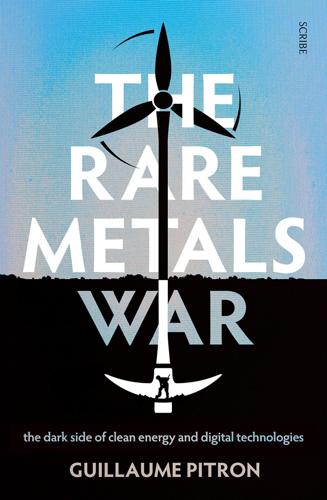
The Rare Metals War
by
Guillaume Pitron
Published 15 Feb 2020
‘In Argentina’s Salar de Hombre Muerto, Local Communities Claim that Lithium Operations Have Contaminated Streams Used for Humans, Livestock and Crop Irrigation’, Friends of the Earth, 2013. ‘The World’s Worst Pollution Problems 2016: the toxics beneath our feet’, Green Cross Switzerland and Pure Earth, 2016. Chapter Two: The dark side of green and digital technologies The 5th Annual Cleantech & Technology Metals Summit: Invest in the Cleantech Revolution. ‘World Energy Outlook 2019 Factsheet: Power and renewables’, International Energy Agency, 2019. Tourillon reached this estimate using the Greenhouse Gas Equivalencies Calculator of the United States Environmental Protection Agency. Refer to the EPA’s Greenhouse Gas Equivalencies Calculator online.
…
As rightly put by Louis Maréchal, currently extractives sector policy adviser within the OECD’s Responsible Business Conduct Unit, by transferring the responsibility of production to mining countries we have also relocated the associated societal repercussions: corruption, conflict, governance issues, the black market, human rights violations, and so on. Interview with Louis Maréchal, 2017. Keynote by Gregory Bowes, Chairman of Northern Graphite, 5th Annual Cleantech & Technology Metals Summit: Invest in The Cleantech Revolution, 2016. Interview with Xue Lan, professor of political science at Tsinghua University, 2016. ‘Annual Report Pursuant to Section 13 or 15(d) of the Securities Exchange Act of 1934 for the Fiscal Year Ended September 29, 2018.’, Apple Inc, 2018. Apple’s 2019 environmental report mentions the presence of metals such as rare earths, cobalt and tungsten in their mobile phones, but omits the conditions under which they are extracted and refined.
…
See ‘Red China’s Green Crisis’, Le Monde diplomatique, July 2017. These are the key takeaways of the research by Karl Gerald Van den Boogaart from the Freiberg University of Mining and Technology. His work was presented at the Denver SME Critical Minerals Conference in 2014 and quoted by Dudley Kingsnorth at the 5th Annual Cleantech and Technology Metals Summit in Toronto in April 2016. Dudley Kingsnorth, professor at Curtin University, Western Australia. A highly approximate estimation values the production market at $1,800 billion in 2015. Interview with Peter Dent of the Electron Energy Corporation, 2011.

Human Frontiers: The Future of Big Ideas in an Age of Small Thinking
by
Michael Bhaskar
Published 2 Nov 2021
In fact it's often part of that same parasitic ecosystem.36 Timescales in biotech or materials science are often too long for venture capital funds to realise a return. Creating a minimum viable product is, unlike with software, capital and infrastructure intensive. Cleantech is a good example. In 2006 $1.75 billion was invested in cleantech. By 2011 that amount had boomed to $25 billion.37 But then at least half the money was lost in company failures. Venture capitalists shied away from such investments as they showed that ‘real world’ tech was more difficult and longer than the cycles of software and traditional VC investment. Cleantech was damaged, progress set back years. VC-backed R&D struggles with this kind of physical prototyping, which, unlike websites, comes with enormous startup costs and steep learning curves.
…
Andrew Ng, the AI pioneer, argues that the complexity of the Chinese language, and its level of investment, have pushed AI natural language processing ahead of the West, while Eric Schmidt, former CEO of Google, expects China to overtake the US in AI in the near future.17 Whereas the UK is putting at most £150 million towards the development of quantum computing, China has invested $15 billion and rising – its National Laboratory for Quantum Information Sciences is the largest anywhere in the world. Projects like the Chang’e 4 probe, the world's first to land and explore on the far side of the moon, the 500m Aperture Spherical Radio Telescope, and advances in cleantech like batteries and photovoltaics are the fruits of year-on-year spending increases of well over 12 per cent. A single research park in Beijing, Zhongguancun, sprawls over 100 square kilometres and hosts 20,000 companies. The Chinese news agency Xinhua reports that a base is planned for the Moon's south pole, and a mission to land on Jupiter's moon Callisto is also in the works.18 It's hard to see any of this grinding to a halt in the next decades.
…
utm_source=twitterShare White, Curtis (2003), The Middle Mind: Why Americans Don't Think for Themselves, San Francisco: HarperSanFrancisco White, Curtis (2014), The Science Delusion: Asking the Big Questions in a Culture of Easy Answers, New York: Melville House Whitehead, A.N. (1925), Science and the Modern World, London: Macmillan Williams, Jeffrey J. (2018), ‘The Rise of the Promotional Intellectual’, The Chronicle of Higher Education, accessed 22 August 2018, available at https://www.chronicle.com/article/the-rise-of-the-promotional-intellectual/ Wilson, Edward O. (2017), The Origins of Creativity, London: Allen Lane Winchester, Simon (2008), The Man Who Loved China: The Fantastic Story of the Eccentric Scientist Who Unlocked the Mysteries of the Middle Kingdom, New York: HarperCollins Wolf, Martin (2019), ‘On the Technological Slowdown’, Foreign Affairs, accessed 14 July 2019, available at https://www.foreignaffairs.com/articles/2015-11-19/martin-wolf-innovation-slowdown Wong, May (2017), ‘Scholars say big ideas are getting harder to find’, Phys.org, accessed 10 October 2018, available at https://phys.org/news/2017-09-scholars-big-ideas-harder.html Wootton, David (2015), The Invention of Science: A New History of the Scientific Revolution, London: Allen Lane Wright, Robert (2000), Nonzero: History, Evolution and Human Cooperation, New York: Pantheon Books Wright, Ronald (2006), A Short History of Progress, Edinburgh: Canongate Wu, L., Wang, D., and Evans, J.A. (2019), ‘Large teams develop and small teams disrupt science and technology’, Nature 566, pp. 378–82 Wuchty, Stefan, Jones, Benjamin F., and Uzzi, Brian (2007), ‘The Increasing Dominance of Teams in Production of Knowledge’, Science, Vol. 316 No. 5827, pp. 1036–9 Xinhua (2019), ‘China to build scientific research station on Moon's south pole’, Xinhua, accessed 18 January 2021, available at http://www.xinhuanet.com/english/2019-04/24/c_138004666.htm Yueh, Linda (2018), The Great Economists: How Their Ideas Can Help Us Today, London: Penguin Viking Index ‘0,10’ exhibition 103 ‘0-I’ ideas 31 Aadhaar 265 abstraction 103 AC motor 287, 288 academia 209 Académie des sciences 47 Adam (robot) 235–6 Adams, John 211 Adler, Alfred 188 Adobe 265 Advanced Research Projects Agency (ARPA) 180, 247, 253, 296, 317 AEG 34 aeroplanes 62–6, 68–70, 71, 219 Aeschylus 3 Africa 267, 279–80, 295 age/ageing 122, 158–60, 193 AGI see artificial general intelligence Agrarian Revolution 252 agricultural production 92–3 AI see artificial intelligence Akcigit, Ufuk 193 Alexander the Great 159 Alexander, Albert 52 Alexandrian Library 4, 295, 304 algorithms 175, 185, 196, 224, 235, 245 aliens 240–1, 306, 308–9, 337 Allison, Jim 58 Alphabet 193, 225, 265, 294, 295 AlphaFold software 225–6, 227, 228–9, 233 AlphaGo software 226–7, 228, 233 AlQuraishi, Mohammed 225, 226, 229 Amazon 84–5, 214, 272 Amazon Prime Air 71 American Revolution 139 amino acids 223, 226 Ampère, André-Marie 74–5 Anaximander 35 ancestors 10–12 ancient Greeks 1–6, 7–8, 291, 303–4 Anderson, Kurt 106 Angkor Wat 43 anthrax 47–8, 51 Anthropocene 14–15 anti-reason 211–12 anti-science 211–12 antibacterials 234 antibiotics 38, 52–3, 124, 125, 217, 315 resistance to 235 Apollo missions 70, 315, 316, 317, 318 Apple 33, 85, 159, 185, 186, 193, 272, 296, 312 Aquinas, Thomas 36 AR see augmented reality archaeology 153–4 Archimedes 1–6, 7–8, 19, 27, 32, 37, 39, 291, 304 architecture 103, 115, 188 ARIA 297 Aristarchus 5 Aristotle 24, 108, 282, 304 Arkwright, Richard 25, 26, 34, 253 Armstrong, Louis 103 ARPA see Advanced Research Projects Agency art 99–104, 107–8, 176–7, 236, 321, 339 Artemis (Moon mission) 71, 218 artificial general intelligence (AGI) 226, 237–8, 249, 250, 310, 313, 330, 341 artificial intelligence (AI) 225–9, 233–41, 246–7, 248, 249–52, 262, 266, 300, 310, 312–13, 323, 329, 330, 331, 338 arts 152, 293 see also specific arts Artsimovich, Lev 147 arXiv 116 Asia 264, 267–8, 273, 275 Asimov, Isaac, Foundation 45 Astor, John Jacob 288 astronomy 30, 231, 232 AT&T 85, 181, 183, 185, 197 Ates, Sina T. 193 Athens 24, 295 Atlantis 154 augmented reality (AR) 241–2, 338 authoritarianism 112–13, 284 autonomous vehicles 71, 72, 219 ‘Axial Age’ 108 Azoulay, Pierre 317–18 Bach, J.S. 236 bacillus 46 Bacon, Francis 25, 259 bacteria 38, 46, 53 Bahcall, Safi 31 Ballets Russes 99–100 Baltimore and Ohio railway 67 Banks, Iain M. 310 Bardeen, John 182 BASF 289 Batchelor, Charles 286 Bates, Paul 226 Bayes, Thomas 289 Beagle (ship) 36 Beethoven, Ludwig van 26 Beijing Genomics Institute 257, 294–5 Bell Labs 180–4, 186–8, 190, 206, 214, 217, 289, 296, 322 Benz, Karl 68, 219, 330 Bergson, Henri 109 Bessemer process 80 Bezos, Jeff 71, 326 Bhattacharya, Jay 201, 202, 321 Biden, Joe 59 Big Bang 117, 174, 181 Big Big Ideas 79–80 big ideas 5, 8, 11, 13–19 adoption 28 and an uncertain future 302–36 and art 99–103 artificial 223–38 and the Big Ideas Famine 13 and bisociation 36 blockers to 17–18 and breakthrough problems 46–73, 77, 86, 98, 222, 250, 301 and the ‘burden of knowledge’ effect 154–65, 175, 178, 235, 338 and business formation 95 ceiling 18 conception 37 definition 27–8, 40–1 Enlightenment 132–40, 136–40 era of 109–10 erroneous 176 evidence for 222, 223–54 execution 37 ‘fishing out’ mechanism 152 future of 45, 98, 302–36, 337–43 harmful nature 41–2 how they work 23–45 and the Idea Paradox 178–9, 187, 191, 217, 226, 250, 254, 283–4, 301, 312, 342 and the Kardashev Scale 337–43 long and winding course of 4, 5, 35–8, 136 and the low-hanging fruit paradox 149–54, 167, 178 and luck 38–9 moral 136, 138 nature of 169–72 necessity of 41–3 need for 42–3 normalisation of 171–5, 178 originality of 28 paradox of 143–79 and patents 97 process of 37–8 purchase 37–8 and resources 128 and rights 132–40 and ‘ripeness’ 39 and short-termism 192 slow death of 106–7 slowdown of 98 society's reaction to 216 and specialisation 156, 157–8 today 21–140 tomorrow 141–343 big pharma 31, 60, 185, 217–18, 226 Big Science 118–19 Bill of Rights 137 Bingham, Hiram 153 biology 243–8, 300 synthetic 245–6, 251, 310, 329 BioNTech 218, 298 biotech 195–6, 240, 246, 255–8, 262, 266, 307 bisociation 36 Björk 104 Black, Joseph 26 ‘black swan’ events 307, 310 Bletchley Park 180, 296 Bloom, Nick 91, 92, 93 Boeing 69, 72, 162, 165, 192, 238 Bohr, Niels 104, 118, 159 Boltsmann, Ludwig 188 Boston Consulting Group 204 Botha, P.W. 114 Bowie, David 107 Boyer, Herbert 243 Boyle, Robert 232 Brahe, Tycho 36, 229, 292 brain 166, 246–8, 299–300 collective 299, 300–1 whole brain emulations (‘ems’) 248–9, 341 brain drains 197 brain-to-machine interfaces 247–8 Branson, Richard 71 Brattain, Walter 182 Brazil 266–7, 268, 279 breakthrough organisations 294–9 breakthrough problems 46–73, 77, 86, 98, 222, 234, 250, 301 breakthroughs 2–5, 27–8, 32–7, 41, 129, 152, 156 and expedition novelty 333 hostility to 187 medical 58–60 missing 175 near-misses 160 nuclear power 145 price of 87–98 and short-termism 192 slowdown of 87, 94 society's reaction to 216 and universities 204 see also ‘Eureka’ moments breast cancer 94 Brexit referendum 2016: 208 Brin, Sergey 319, 326 Britain 24, 146, 259, 283, 297 see also United Kingdom British Telecom 196 Brunel, Isambard Kingdom 67 Brunelleschi 232 Bruno, Giordano 216 Buddhism 108, 175, 264–5, 340 Buhler, Charlotte 188–9 Buhler, Karl 188–9 ‘burden of knowledge’ effect 154–65, 175, 178, 235, 338 bureaucracy 198–87, 280–1 Bush, George W. 211 Bush, Vannevar 168, 314–15, 317 business start-ups 95–6 Cage, John 104 Callard, Agnes 111 Caltech 184 Cambridge University 75, 76, 124, 235–6, 257, 294–6 canals 67 cancer 57–61, 76, 93–4, 131, 234, 245, 318 research 59–61 capital and economic growth 88 gray 192, 196 human 275, 277 capitalism 36, 111–13, 186, 189, 191–8 CAR-Ts see chimeric antigen receptor T-cells carbon dioxide emissions 220–1 Cardwell's Law 283 Carey, Nessa 244 Carnap, Rudolf 189 Carnarvon, Lord 153 cars 289 electric 71 flying 71 Carter, Howard 153 Carter, Jimmy 58 Carthage 3, 43 Cartright, Mary 163 CASP see Critical Assessment of Protein Structure Prediction Cassin, René 135 Catholic Church 206, 230 Cavendish Laboratory 76, 294 Cell (journal) 234 censorship 210–11 Census Bureau (US) 78 Centers for Disease Control 212 Cerf, Vint 253 CERN 118, 233, 239, 252, 296 Chain, Ernst 52, 60, 124 Champollion, Jean-François 155 Chang, Peng Chun 135 change 10–13, 18–19, 24 rapid 30, 32 resistance to 222 slowdown 85 chaos theory 163 Chaplin, Charlie 104 Chardin, Pierre Teilhard de 300 Charpentier, Emmanuelle 244, 256 chemistry 49, 56, 104, 117, 118, 124, 149–50, 159, 241, 244 chemotherapy 57 Chicago 10 chicken cholera 46 chimeric antigen receptor T-cells (CAR-Ts) 58, 61 China 15, 25, 71–2, 111, 112, 138, 208, 213, 216, 255–64, 265, 266, 267, 268, 275, 277, 279, 280, 283, 284–5, 312, 313, 314, 319, 328 Han 259, 260 Ming 284, 308, 309 Qing 260 Song 24, 259–60, 306 Tang 259–60 Zhou 259 Christianity 108, 303–4, 340 Church, George 245 cities 270–2, 308–9, 340 civilisation collapse 42–4 decay 187 cleantech 195 climate change 219–21, 284, 313–14, 338 clinical trials 218 cliodynamics 339 coal 23, 24, 26, 80, 220 Cocteau, Jean 101 cognitive complexity, high 332–3 cognitive diversity 281–3 Cognitive Revolution 252 Cohen, Stanley N. 243, 244 collective intelligence 339 collectivism 282 Collison, Patrick 117, 272 colour 75 Coltrane, John 104 Columbian Exchange 177 Columbus 38 comfort zones, stepping outside of 334 communism 111, 133, 134, 173, 217, 284 companies creation 95–6 numbers 96–7 competition 87, 283 complacency 221–2 complexity 161–7, 178, 204, 208, 298, 302, 329 high cognitive 332–3 compliance 205–6 computational power 128–9, 168, 234, 250 computer games 107 computers 166–7, 240, 253 computing 254 see also quantum computing Confucianism 133, 259 Confucius 24, 108, 109, 282 Congressional Budget Office 82 connectivity 272 Conon of Samos 4 consciousness 248, 340 consequences 328–9 consolidation, age of 86 Constantine 303 convergence 174, 311–12 Copernicus 29, 30, 41, 152, 171, 229, 232, 292 copyright 195 corporations 204–5 cosmic background microwave radiation 117, 181 cotton weaving, flying shuttle 24–5 Coulomb, Charles-Augustin de 74–5 counterculture 106 Covid-19 (coronavirus) pandemic 13, 14, 15, 55, 86, 113–14, 193, 202, 208, 212, 218, 251–2, 263, 283–4, 297–8, 309, 318, 327 vaccine 125, 245 Cowen, Tyler 13, 82, 94–5, 221 cowpox 47 creativity 188, 283 and artificial intelligence 236 crisis in 108 decrease 106–8 and universities 203 Crete 43 Crick, Francis 119, 296 CRISPR 243, 244, 251, 255–8, 299 Critical Assessment of Protein Structure Prediction (CASP) 224–6, 228 Cronin, Lee 242 crop yields 92–3 cultural diversity 281–3 cultural homogenisation 177 cultural rebellion 106–7 Cultural Revolution 114, 305 culture, stuck 106 Cunard 67 Curie, Marie 104, 144, 203, 289–90, 332 Daniels, John T. 62–3 Daoism 259 dark matter/energy/force 338 DARPA see Defense Advanced Research Projects Agency Darwin, Charles 34, 35–6, 37–8, 41, 77, 109, 118, 171, 289 Darwin, Erasmus 35 data 233 datasets, large 28 Davy, Sir Humphrey 149, 150 Debussy, Claude 100–1 decision-making, bad 43–4 Declaration of Independence 1776: 137 Declaration of the Rights of Man and Citizen 1789: 137 DeepMind 225–9, 296 Defense Advanced Research Projects Agency (DARPA) 315 democracy 111–12 Deng Xiaoping 261 deoxyribonucleic acid (DNA) 119, 223–4, 243, 251, 255, 339 DNA sequencing 56 Derrida, Jacques 109 Deutsch, David 126, 203 Diaghilev, Sergei 99–101 Diamond, Jared 42 Digital Age 180 digital technology 241–2, 243 diminishing returns 87, 91, 94, 97, 118, 123, 126, 130–1, 150, 161, 169, 173, 222, 250, 276, 285, 301 Dirac, Paul 159–60 disruption 34, 96, 109, 119, 157 diversity, cultural 281–3 DNA see deoxyribonucleic acid Dorling, Danny 171 Doudna, Jennifer 244, 251, 256 Douglas, Mary 290 Douthat, Ross 14, 106 drag 65 Drake equation 306 Drezner, Daniel 214 drones, delivery 71, 72 Drucker, Peter 189 drugs 55–7, 124, 235 Eroom's Law 55, 57, 61, 92–3, 119, 161, 234, 245, 338 and machine learning 234 research and development 55–7, 61, 92–4, 119, 161, 172–3, 217–18, 234, 245, 315, 338 see also pharmaceutical industry Duchamp, Marcel 103, 171 DuPont 184 Dutch East India Company 34 Dyson, Freeman 120 dystopias 305–8 East India Company 34 Easter Island 42–3 Eastern Europe 138 ecocides 42–3 economic growth 240, 272, 273, 316 endogenous 94 and ideas 88, 89–92, 95 process of 87–8 slowdown 82, 83, 84, 85, 178 economics 87–9, 98, 339, 340 contradictions of 87 Economist, The (magazine) 188 Edelman annual trust barometer 209 Edison, Thomas 183–4, 286–9, 290, 293 education 127, 277, 324–8 Einstein, Albert 11, 29, 74, 77, 104, 109, 117, 119, 124, 159–60, 203, 332 Eisenstein, Elizabeth 231 Eldredge, Niles 30 electric cars 71 electricity 11, 74–7, 81, 286–7, 289 electromagnetic fields 76 electromagnetic waves 75, 76 elements (chemical) 149–50 Elizabeth II 144–5 employment 204–5 Encyclopædia Britannica 97, 128, 155 ‘End of History’ 112 energy 337–8, 341–2 availability 85 use per capita 85 see also nuclear power engineering 243 England 25, 144–5, 309 Englert, François 118 Enlightenment 130, 136–40, 252 see also Industrial Enlightenment; neo-Enlightenment Eno, Brian 295 entrepreneurship, decline 96 epigenetics 164 epigraphy 236–7 epistemic polarisation 210 Epstein, David 334 Eratosthenes 5 Eroom's Law 55, 57, 61, 92–3, 119, 161, 234, 245, 338 ethical issues 256–7 Euclid 3, 304 ‘Eureka’ moments 2–5, 35, 36–7, 129, 163 Europe 95, 247, 258–60, 268, 268, 271, 283, 304, 308 European Space Agency 71 European Union (EU) 206, 216, 262, 266 Evans, Arthur 153 evolutionary theory 30, 35–6 expedition novelty 333 experimental spaces 296–8 Expressionism 104 Facebook 34, 159, 170, 197 Fahrenheit 232 failure, fear of 335 Faraday, Michael 75 FCC see Future Circular Collider FDA see Food and Drug Administration Federal Reserve (US) 82 Feigenbaum, Mitchell 163 fermentation 49 Fermi, Enrico 143, 159, 306 Fermi Paradox 306 Fernández-Armesto, Felipe 109 fertility rates 269 Feynman, Richard 77, 166, 332 film 104, 106–7, 108, 115 financialism 191–8, 206–7, 214, 217, 219 Firebird, The (ballet) 99–100 ‘first knowledge economy’ 25–6 First World War 54, 99, 104, 187, 188–9 Fisk, James 182 Fleming, Alexander 38, 52, 60, 332 flight 36, 62–6, 68–70, 71, 335 Flint & Company 64 flooding 220, 284 Florey, Howard 52, 60, 124, 332 Flyer, the 62–4, 66, 72 Foldit software 225 Food and Drug Administration (FDA) 55, 60, 93, 212 food supply 81 Ford 34, 253 Ford, Henry 68, 104, 219 Fordism 81 Foucault, Michel 110 Fraenkel, Eduard 124 France 49–51, 54, 64, 67, 95, 279, 309, 332 franchises 31 Franklin, Benjamin 119, 211 Frederick the Great 292 French Revolution 137, 275 Freud, Sigmund 34, 36, 77, 104, 171, 188, 190, 216 frontier 278–9, 283–4, 302, 310–11 Fukuyama, Francis 111–12 fundamentalism 213 Future Circular Collider (FCC) 239 futurology 44 Gagarin, Yuri 70 Galen 303 Galileo 206, 231, 232, 291, 322 Galois, Évariste 159 GDPR see General Data Protection Regulation Gell-Mann, Murray 77 gene editing 243–4, 251, 255–8 General Data Protection Regulation (GDPR) 206 General Electric (GE) 33, 184, 265, 288, 333 General Motors 289 Generation Z 86 genes 223–4 genetic engineering 243–4, 251, 253, 255–8 genetic science 163–4, 202 genius 26 genome, human 119, 202, 244, 255–7, 296, 313 genome sequencing 243–4 germ theory of disease 50–1, 53 Germany 54, 95, 96, 279, 283, 292, 332 Gesamtkunstwerk 99 Gibson, William 241 Glendon, Mary Ann 135 global warming 147 globalisation 177 Go 226–7 Gödel, Kurt 41, 168 Goldman Sachs 197 Goodhart's Law 199 Google 34, 85, 185, 197, 240, 272, 318 20 per cent time 319–20 Google Glass 241 Google Maps 86 Google Scholar 116 Google X 294 Gordon, Robert 13, 83, 94–5 Gouges, Olympe de 137 Gould, Stephen Jay 30 Gove, Michael 208 government 205, 207, 214, 216, 252, 267–8, 297 funding 185–6, 249, 252, 314–19, 321 GPT language prediction 234, 236 Graeber, David 13–14, 111 grants 120, 185–6, 195, 202, 316, 317, 319, 321–3 gravitational waves 117–18, 119 Great Acceleration 309–10 Great Convergence 255–301, 339 Great Disruption 96 Great Enrichment (Great Divergence) 23, 26, 258 Great Exhibition 1851: 293, 309 Great Stagnation Debate 13–14, 16, 17, 45, 72, 82–3, 87, 94–6, 129, 150, 240, 279, 338 Greenland 42 Gropius, Walter 103 Gross Domestic Product (GDP) 82, 90, 128, 278, 318 GDP per capita 23, 78, 82 growth cultures 25 growth theory, endogenous 88–9, 94 Gutenberg, Johannes 36 Guzey, Alexey 200, 322 Haber, Fritz 332 Haber-Bosch process 289 Hadid, Zaha 152 Hahn, Otto 144 Hamilton, Margaret 316 Harari, Yuval Noah 114–15, 236 Harris, Robert 307 Harvard Fellows 200 Harvard, John 156 Harvey, William 34, 291–2 Hassabis, Demis 229, 233 Hayek, Friedrich 189 Hegel, Georg Wilhelm Friedrich 36 Heisenberg, Werner 41, 159, 168, 332 heliocentric theory 5, 29, 118, 232, 304 helium 145 Hendrix, Jimi 105 Henry Adams curve 85 Hero of Alexandria 39 Herper, Matthew 55 Hertz, Heinrich 76 Herzl, Theodor 188 Hesse, Herman 307 Hieron II, king of Syracuse 1–2 Higgs, Peter 118 Higgs boson 117–18, 119, 239 Hinduism 133 Hiroshima 144 Hitler, Adolf 138, 188 Hodgkin, Dorothy 124, 332 Hollingsworth, J.

Hope Dies Last: Visionary People Across the World, Fighting to Find Us a Future
by
Alan Weisman
Published 21 Apr 2025
August 1, 2011. https://www.youtube.com/watch?v=0zqiywvoA5c. Barnard, Michael. “CleanTech Talk 1/2: CEO Karsten Temme of Pivot Bio on Microbes Slashing Agriculture GHG Emissions.” Clean Technica, August 21, 2021. https://cleantechnica.com/2021/08/21/cleantech-talk-1-2-ceo-karsten-temme-of-pivotbio-on-microbes-slashing-agriculture-ghg-emissions. ———. “CleanTech Talk 2/2: Pivot Bio’s Genetically Engineered Microbes Displace 20–25% of Fertilizer Today, 100% by 2030.” Clean Technica, August 22, 2021. https://cleantechnica.com/2021/08/22/cleantech-talk-2-2-pivotbios-genetically-engineered-microbes-displace-20-25-of-fertilizer-today-100-by-2030.
…
The challenge of weaning an entire city from fossil fuels intrigued him, and getting to stay home with his wife appealed, so he applied. His qualifications were peerless: Ph.D. in electrical engineering from University College London; former presidential fellow during Obama’s term for promoting Cleantech industries in Mexico, where he’d midwifed a constitutional reform to advance solar energy; and State Department envoy to develop climate change legislation in Latin America. Plus, he checked the Hispanic diversity box. So hiring him in March 2021 seemed a no-brainer—until council members realized Luis meant to take them at their word.
…
After five proposals, she agreed, but by then she’d tracked how we think of science back to ancient Greece and Rome, so for her doctorate she switched to studying classics at Stanford. Following her to California, Luis worked with Governor Arnold Schwarzenegger on green legislation. Newly steeped in the urgency of climate change, Luis founded a Cleantech think tank and soon was doing the same for the governments of Mexico, Brazil, Colombia, Chile, and Argentina. Having dealt with big federal budgets, he now saw advantages to the scale of Ithaca’s challenge. “Decarbonizing an entire city at once, you create economies of scale. You can bulk-purchase in industries like heat pumps that are never bought in bulk.”
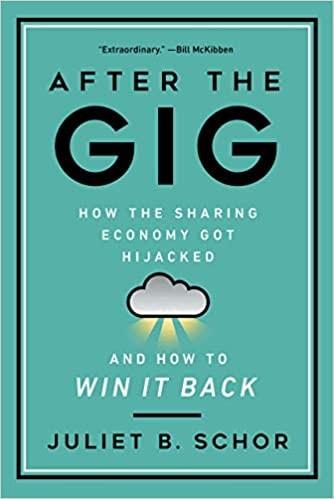
After the Gig: How the Sharing Economy Got Hijacked and How to Win It Back
by
Juliet Schor
,
William Attwood-Charles
and
Mehmet Cansoy
Published 15 Mar 2020
One is that cities have regulated the emissions of taxis, requiring hybrids in some cases, for example. There’s nothing comparable for ride-hailing, and the companies and drivers would be likely to oppose it. 40. Barrios et al. (2018). 41. Cleantech Group (2104). This analysis finds that in the United States there is less difference between hotels and Airbnbs than in Europe. 42. Cleantech Group (2014). The 1–3 percent figure accords with Bivens’s claim that only 2 percent of Airbnb guests would not have traveled in its absence (Bivens 2019). 43. Tussyadiah and Pesonen (2016). 44. Farronato and Fradkin (2018, 29–30). 45.
…
The Logic of Didi and Taxi Drivers’ Labour and Activism in the On-Demand Economy.” New Media & Society 20 (8): 2691–2711. Cherry, Miriam A. 2016. “Beyond Misclassification: The Digital Transformation of Work.” Comparative Labor Law & Policy Journal 37 (3): 577–602. Cleantech Group. 2014. “Environmental Impact of Homesharing: Phase 1 Report.” San Francisco: Cleantech Group. Clewlow, Regina R., and Gouri Shankar Mishra. 2017. “Disruptive Transportation: The Adoption, Utilization, and Impacts of Ride-Hailing in the United States.” UCD-ITS-RR-17–07. Davis, CA: UC Davis Institute of Transportation Studies. https://itspubs.ucdavis.edu/wp-content/themes/ucdavis/pubs/download_pdf.
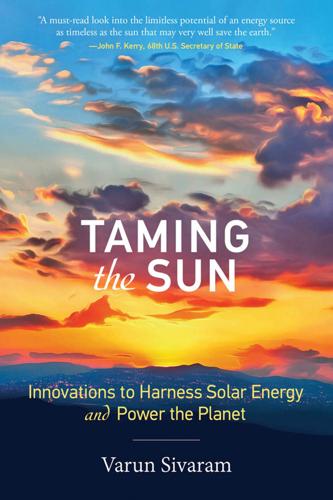
Taming the Sun: Innovations to Harness Solar Energy and Power the Planet
by
Varun Sivaram
Published 2 Mar 2018
Stuck with a product that cost $6.29 per watt to manufacture but only earned $3.42 per watt in the marketplace, Solyndra filed for bankruptcy in 2011, leaving taxpayers on the hook to cover a half-billion dollars of debt.34 In 2012, Republican presidential nominee Mitt Romney assailed President Obama’s bet on Solyndra as “a symbol of gross waste.”35 Over the next two years, both Twin Creeks Technologies and Nanosolar also ran out of money, as did nearly every other American solar start-up. Bruised venture capitalists slashed their cleantech portfolios, and solar became a dirty word in Silicon Valley. As for my father, he left solar behind to rejoin the semiconductor industry, where innovation was alive and well. External shocks like falling silicon prices weren’t the only reasons that the solar start-up bubble burst. As I’ve written with my colleagues Ben Gaddy and Frank O’Sullivan, investor expectations for these companies were likely unrealistic from the beginning.
…
Tim Worstall, “Solyndra: Yes, It Was Possible to See This Failure Coming,” Forbes, September 17, 2011, http://www.forbes.com/sites/timworstall/2011/09/17/solyndra-yes-it-was-possible-to-see-this-failure-coming. 35. Ashley Parker, “Romney Campaigns at Failed Solyndra Factory,” The New York Times, May 21, 2012, http://thecaucus.blogs.nytimes.com/2012/05/31/romney-to-campaign-at-failed-solyndra-factory. 36. Benjamin Gaddy, Varun Sivaram, and Francis O’Sullivan, “Venture Capital and Cleantech: The Wrong Model for Clean Energy Innovation,” July 2016, https://energy.mit.edu/wp-content/uploads/2016/07/MITEI-WP-2016-06.pdf. 37. Kevin Desmond, Innovators in Battery Technology Profiles of 95 Influential Electrochemists (Jefferson, NC: McFarland & Company, Inc., 2016). 38. Martin A. Green, “Silicon Solar Cells: The Ultimate Photovoltaic Solution?”
…
Kammen and Gregory F. Netmet, “The Incredible Shrinking Energy R&D Budget,” The Access Almanac, Spring 2007, 38-40, http://www.accessmagazine.org/wp-content/uploads/sites/7/2016/07/Access-30-06-Almanac-R-D-Budget.pdf. 10. Benjamin Gaddy, Varun Sivaram, Timothy Jones, and Libby Wayman, “Venture Capital and Cleantech: The Wrong Model for Energy Innovation,” Energy Policy 102 (2017): 385–395, doi:10.1016/j.enpol.2016.12.035. 11. Jeff Brady, “After Solyndra Loss, U.S. Energy Loan Program Turning a Profit,” NPR, November 13, 2014, http://www.npr.org/2014/11/13/363572151/after-solyndra-loss-u-s-energy-loan-program-turning-a-profit. 12.
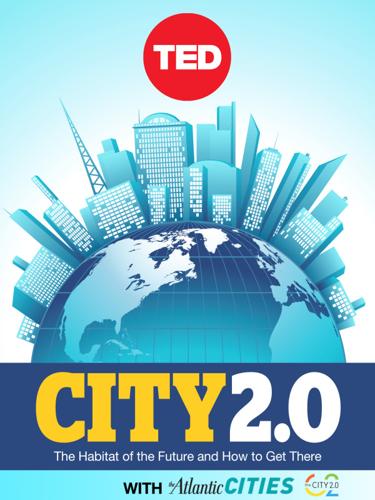
City 2.0: The Habitat of the Future and How to Get There
by
Ted Books
Published 20 Feb 2013
She has also written for Fast Company, Pacific Standard Magazine, Spin, Good Magazine, the New York Times, the Christian Science Monitor, and other print and Web outlets. She is based in Washington, D.C., and is particularly interested in cities, public policy, and strange ideas. Roman Gaus is the founder and CEO of UrbanFarmers, a pioneering clean-tech company that develops sustainable agriculture systems for urban applications. In his previous life, he was a corporate maverick in the food and health space in Europe and North America. He is married to Martina Gaus and has two young boys who keep him busy. Diana Lind is Next City’s executive director and editor-in-chief.

Insane Mode: How Elon Musk's Tesla Sparked an Electric Revolution to End the Age of Oil
by
Hamish McKenzie
Published 30 Sep 2017
In 1996, GM started leasing a production version of that car in California and Arizona under the name EV1. The EV1 was a sporty two-door model that could accelerate from zero to sixty miles per hour in 6.3 seconds. Drivers gained entry to the car with a keypad instead of a key. It quickly found a cult following among clean-tech enthusiasts and was driven by film stars such as Tom Hanks and Mel Gibson. However, no one could own the vehicle. Just 1,117 EV1s were ever made, and they were offered by lease only, ostensibly so GM could ensure quality repairs. The automaker soon found reason to end even that meager offering.
…
Walker tweeted that Musk’s apparent disdain for public transport was a “luxury (or pathology) that only the rich can afford.” Musk responded on Twitter by calling Walker an “idiot.” But then he apologized and corrected himself, clarifying that he meant to say “sanctimonious idiot.” Mitt Romney: In a debate with President Obama, the Republican Party’s 2012 presidential nominee named Tesla among a group of clean-tech companies that had received government funding, labeling them “losers.” Romney “was right about the object of that statement,” Musk would later say, “but not the subject.” Since his teenage years, Musk has known what it’s like to be the victim of bullies. His responses to critics, fair or not, suggest he has no intention of ever again putting himself in such a position of submission.

The Flat White Economy
by
Douglas McWilliams
Published 15 Feb 2015
The Singaporean government is very aware of the need to build on the economy’s spectacular success by taking its innovative and creative sectors “to the next level”. Committed to research and development Singapore has a range of research centres, such as A*Star’s Fusionopolis and Biopolis, the National Research Foundation (NRF) Create (Campus for Research Excellence and Technological Enterprise), the CleanTech Park, the Tuas Biomedical Park, and Singapore Science Park. Government data points out that these are “home to over 1,000 research collaborations with leading players such as Hewlett-Packard, Fujitsu, BASF, Mitsui Chemicals and Nitto Denko”.33 Multinational corporations like Procter & Gamble and Danone have also established knowledge-intensive regional R&D centres in Singapore to develop Asia-specific products.
…
article=1021&context=confpapers INDEX Accenture Fintech Innovation Lab ref1 accommodation ref1, ref2, ref3 cheap ref1, ref2, ref3 cramped ref1 displacement of ref1 proximity to amenities ref1 Advanced Card Systems ref1 advertising/marketing ref1, ref2 campaigns ref1 digital ref1 investment in ref1 online ref1, ref2, ref3, ref4 role of creativity in ref1 Aerob ref1 AirWatch ref1 Alibaba ref1, ref2 floated on NYSE ref1 Allegra Strategies ref1 Allford, Simon ref1 Allford Hall Monaghan Morris ref1 Amazon.com, Inc. ref1, ref2, ref3 Apple, Inc. ref1, ref2, ref3 development kits ref1 facilities of ref1 product lines of ref1 Argentina Buenos Aires share of GDP ref1 Association of London Councils ref1 AT&T Inc. ref1 Australia ref1 Sydney ref1 Austria Vienna share of GDP ref1 Bangladesh economy of ref1 Dhaka ref1 Bank of England investment guidelines ref1 BASF SE ref1 Bell Telephones personnel of ref1 Bennet, Natalie leader of Green Party ref1 bicycles ref1 fatalities associated with ref1 sales of ref1 use in commuting ref1 big data ref1 Birmingham Science Park Aston Innovation Birmingham Complex ref1 Bold Rocket ref1 bonuses ref1 use in property market ref1 Boston Consulting Group ref1, ref2 British Bars and Pubs Association ref1 British Broadcasting Corporation (BBC) BBC Scotland ref1 Brough, Graham ref1 Brown, Gordon ref1, ref2 Burkina Faso Ouagadougou ref1 Burt, Prof Ronald ref1, ref2 Cable and Wireless assets of ref1 Cameron, David economic policies of ref1, ref2 immigration policies of ref1 Canada ref1 Montreal ref1 Toronto ref1, ref2 Vancouver ref1 capital rate of return ref1, ref2 capitalism ref1, ref2, ref3 profits ref1 Catholicism ref1 Centre for Cities ref1, ref2 Centre for Economics and Business Research (Cebr) ref1, ref2, ref3, ref4, ref5, ref6, ref7, ref8, ref9 estimates of UK economic growth ref1 offices of ref1 personnel of ref1, ref2 Centre for Retail Research ref1, ref2 champagne sales figures ref1, ref2 Channel 4 ref1 China Beijing ref1, ref2, ref3 Haidian district ref1 economy of ref1 Golden Shield firewall (Great Firewall of China) ref1 government of ref1, ref2, ref3 Hong Kong ref1, ref2, ref3, ref4, ref5, ref6 Cyberport ref1 Hong Kong Stock Exchange ref1 People’s Liberation Army (PLA) ref1, ref2 special economic zones Hangzhou ref1 Shenzhen ref1 Zhongguancun Innovation Way (Z-innoway) ref1 China Mobile ref1 China Telecom ref1 China Unicom ref1 Cisco Systems facilities of ref1 cloud computing ref1, ref2 Coalition Government immigration policy of ref1, ref2 coffee shops culture of ref1 cyber cafes ref1 growth of market ref1 Commonwealth migration from ref1 Companies House ref1 Confederation of British Industry (CBI) ref1, ref2 personnel of ref1 Confucianism ref1 Conservative Party ref1 Cooper, Wayne ref1 Corporation of London ref1, ref2, ref3 Crafts, Nick ref1 creative economy ref1 Cridland, John leader of CBI ref1 Cromwell, Oliver ref1 Crow, Bob ref1 Daily Mail ref1 Danone ref1 Danticat, Edwidge ref1 Davis, Charles ref1 Decoded ref1 Deloitte ref1 deregulation of financial markets (1986) ref1 digital economy ref1, ref2, ref3, ref4 emergence of ref1, ref2 role of creativity in ref1 Dorling, Danny ref1 Dunne, Ronan CEO of O2 (UK) ref1 Durden, Tyler ref1 Economic Journal, The ref1, ref2 Economist, The ref1, ref2, ref3 Edinburgh University ref1 Eggers, Dave Circle, The (2013) ref1 Egypt Cairo ref1 share of GDP ref1 employment ref1 growth ref1 immigrant labour ref1 in FWE ref1, ref2, ref3, ref4 job creation ref1 low-skilled jobs ref1 public sector 1112 science, technology, engineering and mathematics (STEM) ref1 growth of ref1 shortages ref1 end user demand ref1 Engels, Friedrich ref1 Entrepreneurs for the Future (E4F) ref1 entrepreneurship ref1, ref2, ref3 e.Republic Center for Digital Government and Digital Communities Digital Cities award programme ref1, ref2 Esquire (magazine) ref1 European Economic Area (EEA) ref1 migrants from ref1 contribution to fiscal system ref1 migrants from outside ref1 contribution to fiscal system ref1 European Union (EU) free movement of labour in ref1 member states of ref1, ref2, ref3 taxation regulations ref1 Eurostar ref1 Eurozone ref1, ref2 Crisis (2009–) ref1, ref2, ref3 economy ref1 Facebook ref1, ref2, ref3, ref4 IPO of ref1 Falmouth University ref1 Fan, Donald Senior Director for Office for Diversity of Walmart ref1 FanDuel ref1 Farage, Nigel leader of UKIP ref1 feudalism ref1 financial services ref1, ref2, ref3, ref4, ref5 lifestyles associated with ref1, ref2 Financial Times (FT) ref1 FT Global Top 500 Companies ref1 Fintech ref1 First World War (1914–18) ref1 fiscal transfer ref1, ref2, ref3 net ref1 potential use to cover local deficits ref1 Flat White Economy (FWE) ref1, ref2, ref3, ref4, ref5, ref6, ref7, ref8, ref9, ref10, ref11, ref12, ref13, ref14, ref15, ref16, ref17 advantages of immigration for ref1, ref2, ref3 business model for ref1 development and growth of ref1, ref2, ref3, ref4, ref5, ref6, ref7, ref8, ref9 employment in ref1, ref2, ref3, ref4 shortages ref1 impact on UK economy ref1, ref2 model of ref1, ref2, ref3 replicating ref1-ref2 role of creativity in ref1 startups in ref1 business model ref1 Flat Whiters ref1 accommodation data for ref1 social culture of ref1 fashion ref1 nightlife ref1 transport ref1 technology used by ref1 Forbes (magazine) ref1 France ref1 education system of ref1 Paris ref1, ref2, ref3 share of GDP ref1 Paris-Sarclay ref1 creation of (2006) ref1 potential limitations of ref1 promotion of ICT in ref1 Forst and Sullivan ref1 France ref1, ref2 Freeman, Prof Christopher ref1 Fujitsu Ltd. ref1 Funding Circle ref1 Gates, Bill ref1 Germany ref1, ref2, ref3 Berlin ref1 economy of ref1 Glaeser, Edward ref1 Triumph of the City, The ref1 Global Financial Crisis (2007–9) ref1, ref2 Banking Crises (2008) ref1 impact on migration ref1 UK recession (2008–9) ref1 Global Innovation Index ref1 globalisation ref1, ref2, ref3 Glyn, Andrew ref1 Goodison, Sir Nicholas Chairman of the Stock Exchange ref1 Google, Inc. ref1, ref2, ref3, ref4, ref5, ref6, ref7, ref8 acquisitions made by ref1 development kits ref1 offices of ref1, ref2 Greater London Authority (GLA) ref1, ref2 Green Party members of ref1 Gröningen Growth and Development Centre ref1 Guardian, The ref1, ref2, ref3 Harbron, Rob ref1, ref2 Harrison, Andy Chief Executive of Whitbread ref1 Harvard Business School ref1 Harvard University Harvard Lab for Computer Graphics and Spatial Analysis ref1 HCL Technologies ref1 Heisnberg, Werner uncertainty principle ref1 Hewlett-Packard Company (HP) ref1 Huawei Technologies ref1 immigration ref1, ref2, ref3, ref4, ref5, ref6 advantages for FWE ref1, ref2, ref3 economic impact of ref1, ref2 impact on social cohesion ref1 impact on wages ref1 legislation ref1 access to state benefits ref1 quota systems ref1 non-EEA ref1, ref2 restrictions on ref1, ref2, ref3 Imperial College, London facilities of ref1 India ref1, ref2 Calcutta ref1 IT sector of ref1 Karnataka ref1 Bangalore ref1, ref2, ref3, ref4 Electronics City ref1 Mumbai ref1 inequality ref1 potential role of London in ref1, ref2 sources of wealth ref1 Infosys Ltd ref1 initial public offering (IPOs) ref1 innovation ref1, ref2, ref3, ref4, ref5, ref6, ref7, ref8 hubs ref1, ref2 independent ref1 investments in ref1 projects ref1 Institute for Public Policy Research ref1 intellectual property protection of ref1, ref2 Intel Corporation ref1, ref2, ref3 facilities of ref1 personnel of ref1 International Business Machines (IBM) ref1, ref2 facilities of ref1, ref2, ref3 personnel of ref1, ref2, ref3 internet usage ref1 investment ref1, ref2, ref3 advertising and marketing ref1 capitalising of ref1 in innovation ref1 process of ref1 Israel ref1, ref2 Defence Ministry ref1 Haifa ref1 tech sector of ref1 IT spending ref1, ref2 accounting for ref1 software ref1 Italy ref1 Frascati ref1 Rome ref1 ITC Infotech India Ltd ref1 Japan ref1 economy of ref1 Tokyo ref1 share of GDP ref1 Johnson, Boris Mayor of London ref1, ref2, ref3 Johnson Press plc ref1 Judaism ref1 Kaldor, Nicholas ref1 Keynes, John Maynard ref1 Economic Consequences of the Peace, The ref1 KPMG ref1 labour ref1 division of ref1 immigrant ref1, ref2, ref3, ref4 market ref1 shocks ref1 share of income ref1, ref2 supply of ref1, ref2, ref3, ref4 Labour Party ref1 immigration policies of ref1 Lai, Ian ref1 Laserfiche ref1 Lawson, Nigel ref1 Leeds Beckett University ref1 Level 39 ref1 Liberal Democrats immigration policies of ref1 lifestyles ref1 associated with financial services ref1 Livingstone, Ken ref1 Lloyds ref1 London School of Economics (LSE) ref1 MadRat games ref1 MagnetWorks Engineering ref1 Mahindra Satyam ref1 Mainelli, Michael Gresham Professor of Commerce ref1 Malaysia ref1 Kuala Lumpur ref1 Manchester Science Parks (MSP) ref1 market capitalisation ref1, ref2 market economy ref1 Marx, Karl ref1, ref2 Labour Theory of Value ref1 Marxism ref1 Massachusetts Institute of Technology (MIT) ref1 campuses of ref1 Technology Review ref1, ref2 MasterCard ref1 McAfee, Inc. ref1 McKinsey Global Institute ref1 McQueen, Alexander ref1 McWilliams, Sir Francis ref1 Pray Silence for Jock Whittington (2002) ref1 Medvedev, Dmitry ref1 technology policies of ref1 Metcalfe, Robert ref1 Metcalfe’s Law concept of ref1 Mexico ref1 Mexico City ref1 share of GDP ref1 Microsoft Corporation ref1, ref2, ref3, ref4 facilities of ref1 Future Decoded conference ref1 personnel of ref1 Windows (operating system) ref1 Migration Advisory Committee ref1 Miliband, Ed immigration policies of ref1 MindCandy ref1 Moshi Monsters ref1 offices of ref1 Mitsui Chemicals ref1 Mohan, Mukund CEO of Microsoft Ventures in India ref1 Mongolia Ulan Bator ref1 Moore, Gordon Earle Moore’s Law ref1 MphasiS ref1 National Institute of Economic and Social Research (NIESR) ref1, ref2 Netherlands Amsterdam ref1 network effects ref1 relationship with supereconomies of scale ref1 Network Rail offices of ref1 New Scientist ref1 New Statesman ref1 Nitto Denko ref1 Nokia Oyj ref1 O2 (Telefónica UK Limited) ref1 offices of ref1 personnel of ref1 Office of Communications (Ofcom) ref1 Olympic Games (2012) ref1, ref2 online shopping ref1, ref2 Organisation for Economic Cooperation and Development (OECD) ref1, ref2, ref3, ref4 Osborne, George ref1 Outblaze ref1 Pareto Principle concept of ref1 Passenger Demand Forecasting Council ref1 PayPal ref1 PCCW ref1 Poland accession to EU (2004) ref1 Pollock, Erskine ref1 Procter & Gamble Co. ref1 property markets ref1, ref2 commercial ref1, ref2 housebuilding ref1, ref2 house/property prices ref1, ref2, ref3, ref4 property crisis (2007) ref1 residential ref1 use of bonuses in ref1 public spending ref1, ref2, ref3 Barnett formula ref1 relationship with taxation ref1 Qualcomm facilities of ref1 Reinartz, Werner ref1 Republic of Ireland ref1 research and development (R&D) ref1, ref2, ref3 definitions of ref1, ref2 expenditure ref1, ref2 hubs ref1, ref2 industrial ref1 Research Council for the Arts and Humanities ‘Diasporas, Migration and Identities’ ref1 Rogers, Everett Diffusion of Innovations (1962) ref1 Russian Federation ref1 economy of ref1 Defence Ministry ref1 Moscow ref1, ref2 Skolkovo Innovation Centre ref1, ref2 Saffert, Peter ref1 sales and advertising ref1 Sarkozy, Nicolas technology policies of ref1 Scottish Media Group (STV) ref1 Second World War (1939–45) Blitz, The (1940–1) ref1 shared accommodation ref1 Silicon Canal ref1 Silicon Roundabout ref1, ref2, ref3, ref4, ref5 Silicon Valley ref1, ref2, ref3, ref4, ref5, ref6 role of US government defence spending in development of ref1 social culture of ref1 Silva, Rohan Senior Policy Advisor to David Cameron ref1 Singapore ref1, ref2, ref3, ref4 government of ref1 Research, Innovation and Enterprise Plan (RIE 2015) ref1 research centres of ref1 A*Star Biopolis ref1 Fusionopolis ref1 Campus for Research Excellence and Technological Enterprise (Create) ref1 CleanTech Park ref1 Singapore Science Park ref1 Tuas Biomedical Park ref1 skills drain ref1 Skyscanner ref1 small- and medium-sized businesses (SMBs) ref1 small- and medium-sized enterprises (SMEs) ref1 Small Business Service Household Survey of Entrepreneurship ref1 Smith, Adam Wealth of Nations, The ref1 Smith, Michael Acton founder of MindCandy ref1 Social Democratic Party (SDP) formation of (1981) ref1 social media ref1 restrictions on ref1 Solow, Robert ref1 South Africa Johannesburg share of GDP ref1 South East Regional Assembly ref1 South Korea Seoul ref1 share of GDP ref1 Spain Barcelona ref1 Ibiza ref1 Sprint Corporation ref1 startups ref1 business models of ref1 in FWE ref1 Stigler, George ref1 supereconomies of scale concept of ref1 relationship with network effects ref1 Sweden Stockholm share of GDP ref1 Tata Consultancy Services ref1 taxation ref1, ref2, ref3, ref4, ref5 allowance ref1 corporation ref1 EU regulations ref1 National Insurance ref1, ref2, ref3 regional variation of ref1 relationship with public spending ref1 Tech City ref1, ref2, ref3 technology clusters ref1, ref2, ref3 identification of ref1 Techstars/Barclays ref1 telecommunications ref1 Thatcher, Margaret ref1, ref2 Thile, Peter ref1 trade unions ref1 Transport for London (TfL) ref1, ref2 UK Independence Party (UKIP) members of ref1, ref2 United Kingdom (UK) ref1, ref2, ref3, ref4, ref5, ref6, ref7, ref8, ref9, ref10 Bath ref1 Birmingham ref1, ref2 Bristol ref1 Cambridge ref1 Cheshire ref1 Civil Service ref1 Department for Business, Innovation and Skills ref1, ref2 Department for Transport ref1 economy of ref1, ref2, ref3, ref4, ref5, ref6, ref7, ref8, ref9 contribution of creative industries to ref1 growth of ref1, ref2, ref3, ref4, ref5 Edinburgh ref1 GDP per capita ref1, ref2, ref3, ref4, ref5, ref6 Glasgow ref1, ref2 media clusters in ref1 government of ref1, ref2, ref3 Index of Multiple Deprivation ref1 ‘Innovation Report 2014’ ref1 Hounslow ref1 labour market of ref1 Leeds ref1, ref2, ref3 London ref1, ref2, ref3, ref4, ref5, ref6, ref7, ref8, ref9, ref10, ref11, ref12, ref13, ref14, ref15, ref16, ref17, ref18, ref19, ref20, ref21, ref22, ref23 business sector of ref1 Camden ref1, ref2 City Fringes ref1, ref2 City of London ref1, ref2, ref3, ref4, ref5, ref6, ref7 cultural presence of ref1 economy of ref1, ref2, ref3, ref4, ref5, ref6, ref7, ref8, ref9, ref10 migrant labour in ref1 expansion of ref1, ref2, ref3 GDP per capita ref1, ref2 GVA of ref1, ref2, ref3 Hackney ref1, ref2, ref3 Haringey ref1, ref2 Islington ref1, ref2 Old Street ref1, ref2, ref3, ref4, ref5, ref6 share of national GDP ref1 Shoreditch ref1, ref2, ref3, ref4 Tower Hamlets ref1 transport infrastructure of ref1 Crossrail ref1 Westminster ref1, ref2, ref3 Manchester ref1, ref2, ref3 Midlands ref1 Milton Keynes ref1, ref2 Newbury ref1 Newcastle ref1 Northern Ireland ref1 Northampton ref1 Office for National Statistics (ONS) ref1 Oxford ref1 Parliament House of Commons ref1 House of Lords ref1 pub industry of ref1 Reading ref1 Salford ref1 Slough ref1 United States of America (USA) ref1, ref2, ref3, ref4 Baltimore, MD ref1 Boston, MA ref1, ref2 Buffalo, NY ref1 Cambridge, MA ref1 Chicago, IL ref1 Columbus, OH ref1 Detroit, MI ref1 economy of ref1 government of ref1, ref2 Irving, TX ref1 Jacksonville, FL ref1 Los Angeles, CA ref1 Minneapolis, MN ref1 Nashville, TN ref1 New York City, NY ref1, ref2, ref3, ref4 New York Stock Exchange (NYSE) ref1 Palo Alto, CA ref1 Portland, OR ref1, ref2 Raleigh, NC ref1 Salt Lake City, UT ref1 San Diego, CA ref1 San Francisco, CA ref1 Seattle, WA ref1, ref2 Washington DC ref1 Winston-Salem, NC ref1 University of Chicago faculty of ref1, ref2 University of London ref1 University of Sussex faculty of ref1 venture capital ref1, ref2 Visa facilities of ref1 Vodafone offices of ref1 wages ref1, ref2, ref3, ref4, ref5, ref6 depression of ref1, ref2 growth of ref1 impact of immigration on ref1 low ref1, ref2 Walmart personnel of ref1, ref2 Waze acquired by Google ref1 We Are Apps ref1 Whitbread Costa Coffee ref1 personnel of ref1 Wikipedia ref1 Wilson, Harold ref1 administration of ref1 Wipro Technologies ref1 Wired (magazine) ref1 Woolfe, Steven UKIP spokesman on migration and financial affairs ref1 World Bank ref1 Xiaomi ref1 Yorkshire Post, The ref1 ZopNow ref1

Green Tyranny: Exposing the Totalitarian Roots of the Climate Industrial Complex
by
Rupert Darwall
Published 2 Oct 2017
As Mark Mills puts it, Silicon Valley believes that Moore’s Law—that computer processing power doubles every couple of years—applies to renewable energy technologies and will make them economic.2 A myriad of venture capital speeches and pitches analogized clean tech as an emerging revolution akin to the digital disruption in computing and telephony, Mills says. In over a decade, more than $25 billion was invested in clean-tech ventures, plus another $50 billion in federal grants and gifts. Nearly everyone lost money. Clean tech became a dirty word in most venture capital circles. The limitations of physics and the chemistry of energy impose fundamental constraints that are not analogous to the miniaturization that has driven the exponential growth of IT speeds. Making clean tech viable depends not on technology, which is amenable to results-oriented managements of Silicon Valley, but on fundamental scientific breakthroughs.
…
Schwarzenegger had slammed arguments made by Texan oil refiners that suspending AB32 would create jobs as like “Eva Braun writing a kosher cookbook.”17 The Californian establishment was mobilized. George Shultz was co-chairman of pro-AB32 Californians for Clean Energy and Jobs group. Conceding that some companies were worried about the cost of AB32, “the new regulations will boost the state’s economy by creating ‘clean-tech jobs,’” claimed Ronald Reagan’s former secretary of state and Richard Nixon’s director of Office of Management and Budget.18 What AB32 supporters lacked in intellectual edge, they more than made up with an overwhelming money advantage. They cried foul about out-of-state oil money when the real story was the money pouring in behind AB32 to defeat Prop. 32.
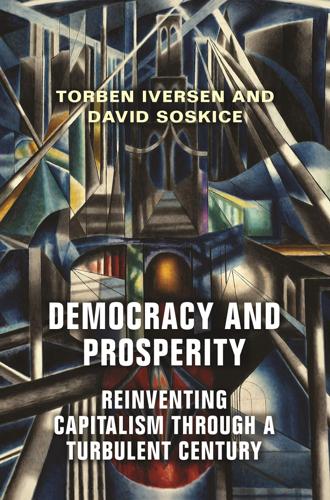
Democracy and Prosperity: Reinventing Capitalism Through a Turbulent Century
by
Torben Iversen
and
David Soskice
Published 5 Feb 2019
The high level of technology literacy is coupled in Denmark and other Scandinavian countries with high-speed internet access, itself a result of public infrastructure investments, to create a propitious environment for innovation and knowledge-intensive technology and helping to grow firms in biotech, ICT, and cleantech industries. A particularly vibrant metropolitan area for the new economy is the Øresund Region, which has a population of nearly four million (including Copenhagen and Malmö) and accounts for more than a quarter of the combined Danish and Swedish GDP (equivalent to about half of the Danish GDP). With twelve universities and about a hundred and fifty thousand students, this high-tech corridor supports thousands of leading-edge companies in ICT, cleantech, and life sciences—mostly small and medium-sized enterprises, but also such established names as Haldor Topsøe, Coloplast, Novo Nor-disk, and Lundbeck (not to mention global giants like Google and IBM with a strong local presence).
…
Home to some of Ger-many’s heavy industry after the war—chemicals, steel, and shipbuilding—it suffered greatly from deindustrialization in the 1980s, with high levels of unemployment and population decline, but since the 1990s it has made a remarkable comeback and now has the highest GDP per capita of any German city with The Economist rating it the most livable city in 2017. The revival has been centered around a diverse set of innovative service industries in finance, life sciences, ICT, cleantech, media and creative industries, as well as trade (it is home to the second largest container harbor in Europe). In many ways Hamburg resembles the Øresund Region and is built on the same raw material: an expansive cluster of high-educated workers supplied by more than a dozen universities and technical universities in the region as well as from around Europe.
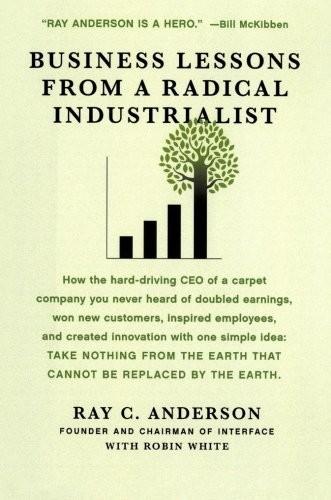
Business Lessons From a Radical Industrialist
by
Ray C. Anderson
Published 28 Mar 2011
Energy companies have a choice: to embrace the future … or ignore reality, and slowly—but surely—be left behind. MIKE BOWLIN, former chairman and CEO, ARCO, and chairman, American Petroleum Institute Embracing the future certainly sounds good. Who could be against something like that? And yet, many have resisted the invitation for one very good reason: Clean-tech energy sources from solar, wind, and biomass just have been too expensive. Pull out the rug of government subsidies and they’d collapse overnight, wouldn’t they? There is more than a kernel of truth to that, though I’m pretty sure that if all the perverse subsidies for oil, coal, gas, and nuclear energy sources were removed and the externalities incorporated into prices, we might see much the same thing happen to them.
…
Brush, designed the first wind turbine to generate electricity. His company, Brush Electric in Cleveland, Ohio, grew up to become part of General Electric. And Charles Fritts was the American inventor who created the first working solar cell in 1884. Yet today American industry takes a backseat to German, Japanese, Chinese, even Danish, clean-tech companies. Why have we allowed it? Could all the perverse incentives that make nineteenth-century energy and technology appear cheaper have something to do with our failure to grasp the greatest business opportunity of the twenty-first? This must change, and putting all our faith in the blind-as-a-bat market won’t get it done.
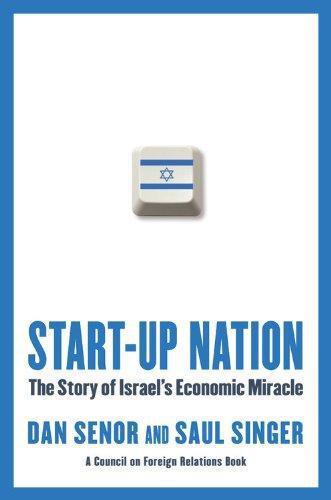
Start-Up Nation: The Story of Israel's Economic Miracle
by
Dan Senor
and
Saul Singer
Published 3 Nov 2009
Indeed, military historian Edward Luttwak estimates that many postarmy Israelis have visited over a dozen countries by age thirty-five.8 Israelis thrive in new economies and uncharted territory in part because they have been out in the world, often in pursuit of the Book. One example of this avid internationalism is Netafim, an Israeli company that has become the largest provider of drip irrigation systems in the world. Founded in 1965, Netafim is a rare example of a company that bridges Israel’s low-tech, agricultural past to the current boom in cleantech. Netafim was created by Simcha Blass, the architect of one of the largest infrastructure projects undertaken in the early years of the state. Born in Poland, he was active in the Jewish self-defense units organized in Warsaw during World War I. Soon after arriving in Israel in the 1930s, he became chief engineer for Mekorot, the national water company, and planned the pipeline and canal that would bring water from the Jordan River and Sea of Galilee to the arid Negev.
…
One local headline declared that Israel had become an Internet “superpower.”5 Vardi invests in Internet start-ups because he believes in them. But his dogged focus on the Internet when almost everyone else was in either classic “Israeli” sectors, such as communications and security, or hot new areas, like cleantech and biotech, is not attributable just to profit calculation. For one, Israel is his cluster, and he is conscious of his status as an “insider” in this community—a community that he wants to succeed. And with that commitment, he is also conscious of his role in sustaining this sector through a dry spell.
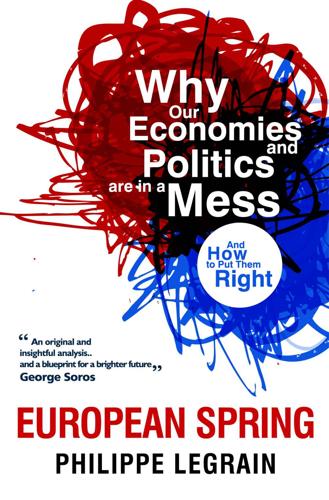
European Spring: Why Our Economies and Politics Are in a Mess - and How to Put Them Right
by
Philippe Legrain
Published 22 Apr 2014
A carbon tax that rose steadily over time would provide some predictability for businesses, enable them to better plan long-term investments and encourage them to try to develop new low-carbon technologies. It would also give clean-tech companies a good idea of the price target they need to achieve to be competitive, allowing them to raise funds and have a go at developing promising technologies. Importantly, governments wouldn’t be trying to second-guess the best technologies or pick winners among the many clean-tech companies. A carbon tax would be flexible: it could be raised or lowered at will, depending on how conditions evolve. It would be transparent and impartial, imposing the same price on all firms, with no opaque special favours for politically connected companies.
…
Steve Jobs, the co-founder of Apple, had a mixed heritage too: his biological father was Syrian-born, his biological mother Swiss American and his adoptive one Armenian American. Across the US economy, migrants make an outsized contribution: a quarter of start-ups are co-founded by them.656 They co-founded a quarter of start-ups in manufacturing, defence and aerospace; more than a fifth in bioscience; and a fifth in clean tech.657 Many US-based entrepreneurs are European. There are about 50,000 Germans in Silicon Valley and an estimated 500 start-ups in the San Francisco Bay area with French founders. Pierre Omidyar, the co-founder of eBay, was born in Paris to Iranian immigrant parents who moved to the US when he was six.
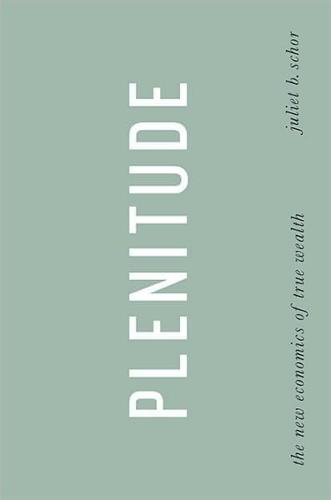
Plenitude: The New Economics of True Wealth
by
Juliet B. Schor
Published 12 May 2010
In its general outlines, if not specifics, it’s a widely applicable vision of economic life. Plenitude is also about transition. Change doesn’t happen overnight. Creating a sustainable economy will take decades, and this is a strategy for prospering during that shift. The beauty of the approach is that it is available right now. It does not require waiting for the clean-tech paradigm to triumph. It doesn’t require getting government on board immediately. Anyone can get started, and many are. It was the right way to go before the economic collapse, in part because it predicted a worsening landscape. It makes even more sense in a period of slow growth or stagnation. As individuals take up the principles of plenitude, they are not merely adopting a private response to what is perforce a collective problem.
…
A classic example is creating an energy-efficient workplace that uses natural light and heat, which not only slashes energy costs and emissions, but also improves labor productivity, lowers manufacturing outlays, and makes employees happier. The initial investment more than pays for itself. Under these conditions, going green raises income and well-being. Some, such as the journalist Thomas L. Friedman, are looking to clean tech to invigorate the U.S. economy by propelling the next round of growth. There’s no debate about the need to produce differently. And nearly everyone agrees we need to price carbon. But will this be enough? Not surprisingly, most of the political action on climate has so far been directed at technology.
…
The other reason we need to get back on the shorter-hours path is ecological, a point that sustainability advocates increasingly recognize. Along with economic revival will come productivity growth—the ability to produce a given amount of output with fewer inputs. Some of it will be growth in the productivity of natural assets achieved by the switch to clean tech. Labor productivity will also increase, especially in the early phases of the recovery. If the freed-up hours are used to expand output, they’ll cause more ecological degradation. The alternative is to produce the same amount in less time, which puts less pressure on the planet. It’s a far cry from austerity, because it doesn’t involve doing with less, only forgoing additions to income, an important distinction.

The Coming Wave: Technology, Power, and the Twenty-First Century's Greatest Dilemma
by
Mustafa Suleyman
Published 4 Sep 2023
China has a growing and impressive share of the most highly cited papers in AI. In terms of volume of AI research, Chinese institutions have published a whopping four and a half times more AI papers than U.S. counterparts since 2010, and comfortably more than the United States, the U.K., India, and Germany combined. It’s not just AI either. From cleantech to bioscience, China surges across the spectrum of fundamental technologies, investing at an epic scale, a burgeoning IP behemoth with “Chinese characteristics.” China overtook the United States in number of PhDs produced in 2007, but since then investment in and expansion of programs have been significant, producing nearly double the number of STEM PhDs as the United States every year.
…
Demographic trends take decades to shift. Generational cohorts do not change size. This slow, inexorable decline is already locked in, a looming iceberg we can do nothing to avoid—except find ways of replacing those workers. Stress on our resources, too, is a certainty. Recall that sourcing materials for cleantech, let alone anything else, is incredibly complex and vulnerable. Demand for lithium, cobalt, and graphite is set to rise 500 percent by 2030. Currently batteries are the best hope for a clean economy, and yet there is barely enough storage capacity to get most places through minutes or even seconds of energy consumption.

Investing Demystified: How to Invest Without Speculation and Sleepless Nights
by
Lars Kroijer
Published 5 Sep 2013
In other words, in this case you may not be holding US government bonds in the way you would be if there were no tax issues, but the municipal bonds are fairly similar and the tax advantage renders this compromise well worthwhile. Enterprise Investment Scheme (EIS) or equivalent In the UK there are certain tax advantages or government subsidies in making start-up and certain types of clean-tech investments. Depending on your tax rate these are well worth knowing about. Your tax adviser should know all about them (these are outside the scope of this book). Gifts Instead of realising a capital gain it may be advantageous to gift securities to your spouse and have him or her make the sale (thus utilising your spouse’s CGT allowance).
…
Think about how this extremely high risk/return profile will affect your portfolio and investing life in general. If you overcome some of the issues involved in making private investments there are some potential great advantages including: There are often tax advantages to private venture-type investing, particularly in development or clean tech sectors. Use them! You can use your expertise and skillset to add to your profits. Depending on the investment there are potentially large pay-outs that an investor investing in broad indices will not have in general (markets don’t go up 100 times). In a book that is extremely anti-get-rich-quick, for the lucky/skilful few, private investments can offer the rare exception.

World Cities and Nation States
by
Greg Clark
and
Tim Moonen
Published 19 Dec 2016
National policymakers find that these cities fundamentally alter the migration patterns of workers, set new business and service standards and have a major impact on the number and kind of international firms, capital and visitors that a nation attracts. The previous cycles, in which world cities such as London, New York and Tokyo thrived, hinged on cities playing hub roles in finance, business, media, leisure tourism and commodities. In the current cycle, science, medicine, ICT, cleantech, traded urban services, higher education, design and real estate are now prominent activities for globalising cities. World cities have also become complex visitor economies – not just attracting holidaymakers but also students, researchers, events and congresses. Established and emerging world cities all compete for investors, entrepreneurs and start‐ups by focusing on liveability, culture and urban regeneration.
…
The conversation about London as a world city still tends to refer to its built-up area within the M25, and ignores the functional commuter region, even though it houses four of the region’s six airports, two of the region’s four leading global universities and significant parts of the region’s growth clusters in life sciences, digital media, ICT and cleantech. These new growth sectors have a more complex regional geography than do finance and business services, and require their own opportunity framework. As part of the ongoing adjustment to London as a world city region, national policy will also need to undertake a full review of the future of the Green Belt, regional infrastructure and institutions in order to manage London’s real economy and quality of life in an integrated way.
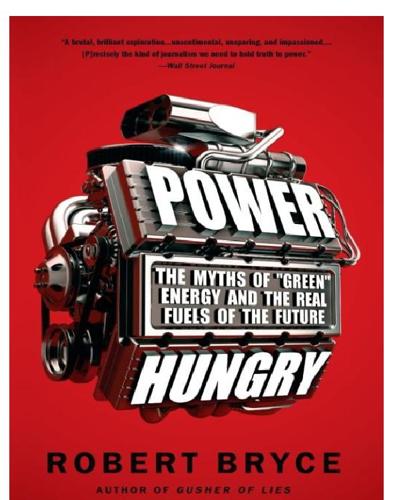
Power Hungry: The Myths of "Green" Energy and the Real Fuels of the Future
by
Robert Bryce
Published 26 Apr 2011
Green, June 7, 2007, http://green.yahoo.com/blog/amorylovins/1/saving-the-climate-for-fun-and-profit.html. 2 Michael Mechanic, “Power Q&A: Amory Lovins,” Mother Jones, May/June 2008, http://www.motherjones.com/politics/2008/05/power-qa-amory-lovins. 3 Stone Phillips, “A Simple Solution to Pain at the Pump?” Dateline NBC, May 7, 2006, http://www.msnbc.msn.com/id/12676374/. 4 Dana Childs, “Cellulosic Ethanol to Be Cost-Competitive by 2009, Says Khosla,” Cleantech.com, March 23, 2007, http://cleantech.com/news/928/cellulosic-ethanol-to-be-cost-competiti. 5 National Public Radio, “Al Gore’s Speech on Renewable Energy,” July 17, 2008, http://www.npr.org/templates/story/story.php?storyId=92638501. 6 Al Gore, “The Climate for Change,” New York Times, November 9, 2008, http://www.nytimes.com/2008/11/09/opinion/09gore.html. 7 Ted McKenna, “New Al Gore Campaign Applies Ads, Media for Grassroots Effort,” PR Week, April 4, 2008. 8 Wecansolveit.org, “Grassroots Partners,” http://www.wecansolveit.org/pages/partners/. 9 Jennifer Alsever, “Pickens’ Natural Gas Idea Picking Up Steam,” MSNBC, October 21, 2008, http://www.msnbc.msn.com/id/27052462/. 10 Pickens Plan, http://media.pickensplan.com/pdf/pickensplan.pdf. 11 WorldPublicOpinion.org, “World Publics Strongly Favor Requiring More Wind and Solar Energy, More Efficiency, Even If It Increases Costs,” November 19, 2008, http://www.worldpublicopinion.org/pipa/articles/btenvironmentra/570.php. 12 League of Conservation Voters, “Board of Directors,” http://www.lcv.org/about-lcv/board-of-directors/ (accessed December 29, 2008). 13 League of Conservation Voters, “Repower, Refuel, and Rebuild America,” http://action.lcv.org/campaign/repower_d (accessed December 29, 2008). 14 NBC Universal, “Company Overview,” http://www.nbcuni.com/About_NBC_Universal/Company_Overview/. 15 The Daily Beast, “Top 9 Moments from Miss USA,” April 20, 2009, http://www.thedailybeast.com/blogs-and-stories/2009-04-20/the-best-and-worst-of-the-miss-usa-pageant/. 16 U.S.

Smart Cities: Big Data, Civic Hackers, and the Quest for a New Utopia
by
Anthony M. Townsend
Published 29 Sep 2013
Hill, “New Challenges Demand New Solutions: IBEW Leader Charts Energy Future,” EnergyBiz, September/October 2007, http://energycentral.fileburst.com/EnergyBizOnline/2007-5-sep-oct/Financial_Front_New_Challenges.pdf. 43Martin Rosenberg, “Continental Grid Vision Needed,” RenewableEnergyWorld.com blog, last modified December 11, 2007, http://www.renewableenergyworld.com/rea/news/article/2007/12/continental-grid-vision-needed-50777. 44“Company development 1847–1865,” Siemens, n.d., http://www.siemens.com/history/en/history/1847_1865_beginnings_and_initial _expansion.htm. 45Jeff St. John, “How Siemens is Tackling the Smart Grid,” GigaOM, last modified June 24, 2010, http://gigaom.com/cleantech/how-siemens-is-tackling-the-smart-grid/. 46“Siemens CEO Peter Löscher: We’re on the threshold of a new electric age,” Siemens press release, December 15, 2010, http://www.siemens.com/press/en/pressrelease/?press=/en/pressrelease/2010/corporate_communication/axx20101227.htm. 47“75% of US Electric Meters to be Smart Meters by 2016,” In-Stat press release, March 5, 2012, http://www.fiercetelecom.com/press-releases/75-us-electric-meters-will-be-smart-meters-2016. 48Chris Nelder, “Why baseload power is doomed,” SmartPlanet, blog, last modified March 28, 2012, http://www.smartplanet.com/blog/energy-futurist/why-baseload-power-is-doomed/445. 49Massoud Amin, “North American Electricity Infrastructure: System Security, Quality, Reliability, Availability, and Efficiency Challenges and their Societal Impacts,” in Continuing Crises in National Transmission Infrastructure: Impacts and Options for Modernization, National Science Foundation (NSF), June 2004. 50Fitze, “No Longer A One-Way Street,” 23. 51Tim Schröder, “Automation’s Ground Floor Opportunity,” Pictures of the Future, Spring 2011, 19, http://www.siemens.com/innovation/apps/pof_microsite/_pof-spring-2011/_pdf/pof_0111_strom_buildings_en.pdf. 52Eric Paulos, lecture, “Forum on Future Cities,” MIT SENSEable City Lab and the Rockefeller Foundation, Cambridge, MA, April 13, 2011, http://techtv.mit.edu/collections/senseable/videos/12305-changing-research; For a thorough treatment see Eric Paulos and James Pierce, “Citizen Energy: Towards Populist Interactive Micro-Energy Production,” n.d., http://www.paulos.net/papers/2011/Citizen_Energy_HICSS2011.pdf. 53James R.
…
Borge-Holthoefer et al., “Structural and Dynamical Patterns on Online Social Networks: The Spanish May 15th Movement as a Case Study,” PLoS ONE, (2011); doi:10.1371/journal.pone.0023883. 29April Kilcrease, “A Conversation with Zipcar’s CEO Scott Griffith,” GigaOM, last modified December 5, 2011, http://gigaom.com/cleantech/a-conversation-with-zipcars-ceo-scott-griffith/. 30Ron Lieber, “Share Your Car, Risk Your Insurance,” New York Times, last modified March 16, 2012, http://www.nytimes.com/2012/03/17/your-money/auto-insurance/enthusiastic-about-car-sharing-your-insurer-isnt.html?pagewanted=all. 31“Our Carbon Footprint,” Corporate Responsibility Report, InterContinental Hotel Groups, 2011, http://www.ihgplc.com/index.asp?
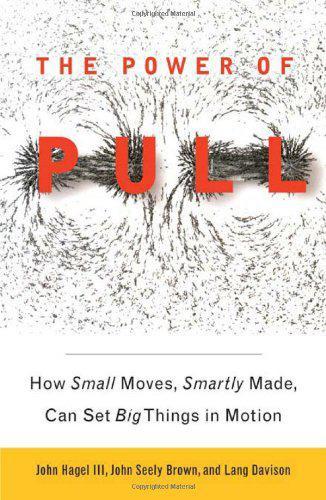
The Power of Pull: How Small Moves, Smartly Made, Can Set Big Things in Motion
by
John Hagel Iii
and
John Seely Brown
Published 12 Apr 2010
She finds that she can fit easily into virtually any discussion and hold her own, even if she has had little exposure to the topic. She has found that the key is to listen carefully, probe beneath the idea by trying to discover its root, and then finding ways to make connections with arenas with which she’s more familiar. Ellen doesn’t know that much about the technologies underlying clean tech, for example. But she sits on a number of clean-tech advisory boards. Why? Because her colleagues value her ability to recognize patterns and connect the dots. Who knew what the big-box retailer could learn from electric car making? In the process, Ellen has discovered that framing the right question is often the best way to add value.
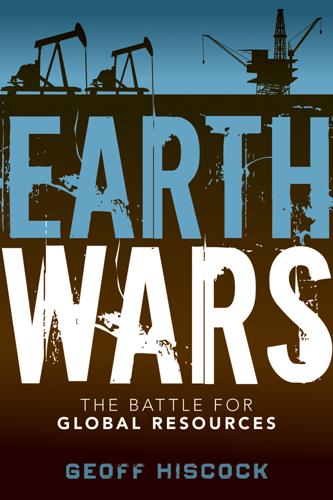
Earth Wars: The Battle for Global Resources
by
Geoff Hiscock
Published 23 Apr 2012
And as Barack Obama noted in his call to arms for America’s green economy, some of the key technologies developed in the United States have been refined and advanced by innovative and/or low-cost producers in China, India, Japan, Germany, Denmark, South Korea, and Taiwan. Today’s market leaders in solar cells, wind turbines, biomass, compact hydro, geothermal, and wave-generating energy include companies such as Voith Hydro in Germany, Vestas in Denmark, Suzlon Energy in India, and Sinovel, LDK Solar, Suntech, and DP CleanTech in China. About 10 km (6 miles) west of the Nevada border in southern California’s Mojave Desert, the beginnings of Obama’s sought-after technological energy fightback are taking shape. Here, in a hot and dry part of the world where the sun shines 340 days a year, BrightSource Energy’s Ivanpah concentrated solar thermal power plant is being built, with a goal of full operation by mid-2013.
…
Department of Energy announced its Project Liberty, which is designed to help ethanol plants make the switch from corn to other feedstocks such as crop residues, native grasses, and woody materials. There are numerous other sources for cellulosic ethanol, including human waste. For example, Israel-based Applied Clean Tech recycles sludge from sewage treatment plants into pellets it calls Recyllose, which can be used as an ethanol feedstock. Massachusetts-based biofuel developer Qteros has a partnership with India’s Praj Industries to develop what it hopes will be “multiple feedstocks by late 2012.”12 Other U.S. companies such as Amyris, Codexis, and Gevo also are exploring commercialization opportunities, but cost remains an issue when biofuels are measured against other energy sources and technologies.
…
Index AAR (Alfa-Access-Renova) Abengoa Abidjan, Ivory Coast Abramov, Alexander Abramovich, Roman Abu Dhabi Access Industries Adani, Gautam Adani Group Adaro Energy Addax & Oryx Group (AOG) Addax Petroleum Aden Aditya Birla Group Adriana Resources Afghanistan Africa general coal copper iron ore oil and gas uranium African Minerals African Rainbow Minerals Agarwal, Anil Ahearn, Michael Aircraft carriers Akpo field, Nigeria Aksai Chin Aksumite kingdom Al-Assad, Bashar Al-Falih, Khalid Al Thani, Sheikh Hamad bin Khalifa Alasaka North Slope offshore reserves Albanese, Tom Alekperov, Vagit Alexandria, Egypt Alfa Group Alfa-Access-Renova (AAR) Algeria Aluminum, aluminium Aluminium Corp of China (Chinalco) Amazon River Ambani, Mukesh Amu Darya Amur and Ussuri Rivers Amyris Anadarko Basin Anadarko Petroleum Anben Iron & Steel Group Andersson, Martin Andes Aneka Tambang Anshan Iron & Steel Anglo American Angola Antarctic Antofagasta Minerals Apache Corp Apple Inc Applied Clean Tech Aquila Resources Arabian Sea Aral Sea ArcelorMittal Arch Coal Archer Daniels Midland Arctic, Arctic Circle, Arctic Ocean Areva Argentina Armenia Arrow Energy Arunachal Pradesh, India Asarco Asian Development Bank Aswan High Dam Ataturk Dam Athabasca Oil Sands Corp Athabasca oil/tar sands Athabaskan people Atlas Energy Atomic Energy of Canada Ltd (AECL) Atomredmetzoloto (ARMZ) Atyrau, Kazakhstan Australia Chinese investment in coal copper gas, LNG gold Indian investment in iron ore Japanese investment in rare earths uranium Australia Pacific LNG Azadegan oil field, Iran Azerbaijan Baffin Island, Baffinland Bakken shale field Baku Bakrie, Aburizal Baltic Sea Banco Bradesco Banco do Brasil Bangladesh Bashneft Baoshan Iron & Steel Baotou Barlow, Maude Barnett shale field Barrick Gold Batista, Eike Batista da Silva, Eliezer Bayan Obo Beas River Beihai Beijing Belgium Belo Monte Dam Belorusneft Ben Ali, Zine El-Abedine Bengal, Bay of Berau Coal Energy Berezovsky, Boris (also known as Platon Elenin) BG Group Bharat Petroleum Corp (BPCL) Bharuch, India BHP Billiton coal iron ore oil and gas Olympic Dam Pilbara shale uranium Biofuel ethanol Birla, Kumar M.
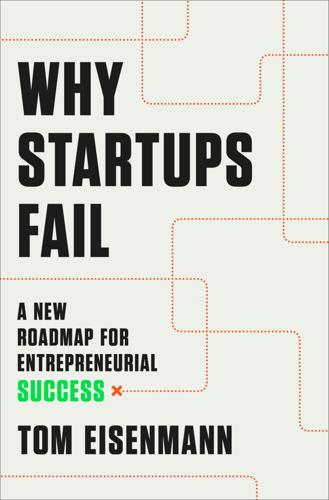
Why Startups Fail: A New Roadmap for Entrepreneurial Success
by
Tom Eisenmann
Published 29 Mar 2021
But, as with the early-stage failure pattern Good Idea, Bad Bedfellows, these late-stage startups stumble due to resource shortfalls of two types. The first relates to financing risk. Sometimes an entire industry sector suddenly falls out of favor with venture capital firms, as with biotech in the early 1990s or cleantech in the late 2000s. In the extreme, even healthy startups caught in a downdraft cannot attract new funds: Babies go out with the bathwater. Funding droughts take investors and entrepreneurs by surprise and can last for months or even years. If one of these dry spells commences just as a fast-growing startup is trying to raise a new funding round, and if that startup cannot rapidly reduce its spending, the venture may not survive.
…
When Covid-19 started paralyzing the U.S. economy, thousands of otherwise healthy new ventures couldn’t raise funds and saw sales dry up; the same thing happened during the Great Recession of 2008. Other misfortunes are less universal, impacting only a single industry sector. During the 2000s, for example, clean tech startups were often predicated on rising fossil fuel costs, but the unexpected growth of fracking and the commensurate decline in fuel costs derailed many of those ventures. They were failures, but many were not blameworthy. They were simply smart bets on rising fuel costs that didn’t pay off. In the same spirit, some entrepreneurs get negative results even after running well-conceived and well-executed experiments.
…
Dot & Bo did that on the demand side. I believe we could have solved our problems on the supply side, too, with more time and more cash.” Venture capital is prone to boom-bust cycles. Notable examples include personal computer hardware and software in the early 1980s; biotechnology in the early 1990s; clean tech in the late 2000s; and—the mother of all bubbles—Internet companies in the late 1990s. In each instance, VCs poured huge amounts of capital into scores of ventures in some hot new sector. Then, the flow of capital suddenly stopped, and startups, starved for capital, struggled to survive. Boom-bust investment cycles do not always impact entire industry sectors.
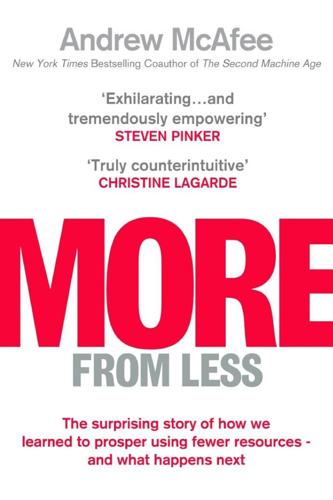
More From Less: The Surprising Story of How We Learned to Prosper Using Fewer Resources – and What Happens Next
by
Andrew McAfee
Published 30 Sep 2019
Another way households can harness the power of the market is by buying clean-energy products. It’s difficult for a family to buy its own nuclear reactor (as it probably should be), but easy to buy solar panels and batteries. Even if this purchase is more of an experiment than a complete home-energy makeover, it serves an important purpose: it signals demand for clean-tech products. As we’ve seen over and over, markets respond to this demand signal by increasing supply and boosting investment and R&D. Increased demand also causes more competition, which drives down prices. The prices of battery and solar energy products have been dropping rapidly. The surest way to sustain and accelerate these huge price declines is to keep increasing demand for clean-energy products.
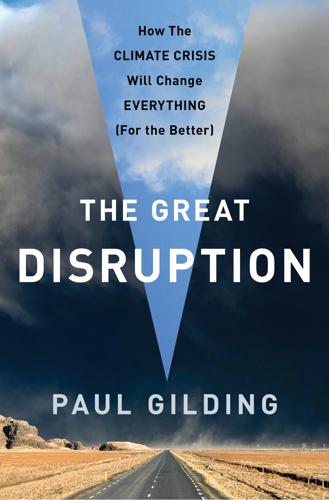
The Great Disruption: Why the Climate Crisis Will Bring on the End of Shopping and the Birth of a New World
by
Paul Gilding
Published 28 Mar 2011
See also UNEP, “Global Trends in Sustainable Energy Investment 2010 Report,” available at http://sefi.unep.org/english/globaltrends2010.html. 6. United States Energy Information Administration, statistics available at http://www.eia.doe.gov/energyexplained/index.cfm?page=electricity _home#tab2. 7. See summary article at http://www.businessspectator.com.au/bs.nsf/Article /IEA-cleantech-low-carbon-energy-technology-emissio-pd20100705 -73F5M. 8. http://www.climatespectator.com.au/commentary/sizing-low-carbon-economy. CHAPTER 13: SHIFTING SANDS 1. See http://www.nytimes.com/2009/07/05/opinion/05friedman.html. 2. See http://www.guardian.co.uk/environment/2010/feb/18/worlds-top-firms-environmental-damage.
…
An accomplished solar scientist, he is determined to make solar cost competitive with coal. Chinese born Dr. Shi was educated in Australia but saw the urgent need and great business opportunity to apply his skills in his home country so went home and founded Suntech Power. In a move laced with irony, Suntech is now opening a plant in Arizona, making it the first Chinese clean tech company to bring manufacturing jobs to the United States. China also has a world-scale electric car and battery company, BYD, that has significantly boosted Warren Buffett’s wealth. Buffett bought 10 percent of BYD in 2008. BYD beat GM and Toyota to market with the first plug in hybrid vehicle and proposes to sell all electric cars in the United States by 2011.
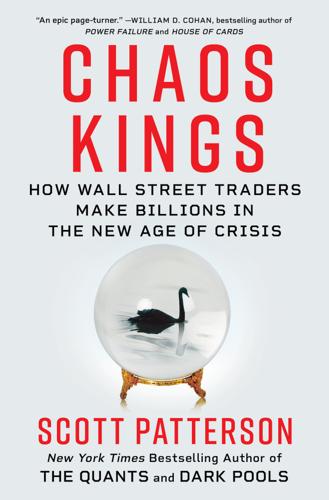
Chaos Kings: How Wall Street Traders Make Billions in the New Age of Crisis
by
Scott Patterson
Published 5 Jun 2023
One pocket of personal success that he could point to was Kepos Capital, which had bet strategically on a rapid transition to decarbonization. By mid-2022, his Kepos bet was up nearly 22 percent since its launch, despite a big rally in oil driven by the Russian invasion of Ukraine and a recent downturn in clean-tech stocks. A lot of the gains for Kepos were driven by Tesla, which Didier Sornette believed was in a massive Dragon King bubble, having surged above $1 trillion in market value. Ever a believer in efficient markets, Litterman was convinced Tesla’s price was an accurate reflection of investors’ expectations of its future profits.

The new village green: living light, living local, living large
by
Stephen Morris
Published 1 Sep 2007
” — Chellis Glendinning Author, Off the Map and Chiva “ Rachel Carson’s Silent Spring was, in terms of both content and timing, one of the most important books ever.The very idea that we had this power was mind-bending.To the Earth’s everlasting sorrow, though, what should have been a wakeup call and the inspiration for a completely different course of action is in danger of becoming no more than an ‘I told you so!’” — Ingrid Witvoet Managing Editor, New Society Publishers “ Rachel Carson’s Silent Spring woke up many of us 50-somethings and 60-somethings who went on to create Earth Day, the EPA, and the green companies that are leading a clean-tech revolution in the marketplace.” — Kevin Danaher Cofounder, Global Exchange Co-Executive Producer, Green Festivals Executive Director, Global Citizen Center 50 chapter 2 : Silent Spring Silent Spring: The New Village Library Silent Spring, by Rachel Carson. Penguin Books, 1970. The Sea Around Us, by Rachel Carson.

Don't Be Evil: How Big Tech Betrayed Its Founding Principles--And All of US
by
Rana Foroohar
Published 5 Nov 2019
Net neutrality is one area in which the public debate over an issue that is central to our economy and civic society has been captured. Patents, as I covered extensively in chapter 5, is another. Over the past few years, I’ve heard disparate complaints from a variety of quarters—from start-up biotech firms, semiconductor and electronics firms, clean-tech companies, data analysis groups, universities, and innovators working on the Internet of things, as well as some of the venture capitalists that invest in these areas—that the patent system and the debate about how to structure it has been hijacked by the interests of the largest tech firms in the country.
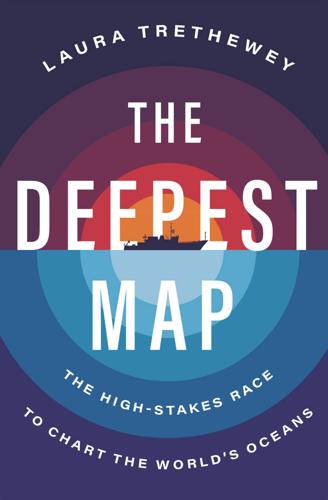
The Deepest Map
by
Laura Trethewey
Published 15 May 2023
The noise of the nodules rattling up the pipes connecting the mining tanks to the surface ship would likely reverberate through the silent water, disorienting the sightless creatures that use sound to navigate and hunt.65 The Metals Company often positions itself as the climate-friendly alternative to the oil and gas industry: “I think we absolutely have to drive towards ending extractive industry for good,” Gerard Barron told a clean-tech magazine in 2021. “. . . It’s like [the nongovernmental organizations that criticize deep-sea mining] are ignoring what the biggest threat is and that’s global warming and [CO2] emissions.”66 Such claims fall apart when the potential climate risks posed by mining the deep sea are considered. Since the Industrial Age, the global ocean has sequestered the majority of the heat from climate change.

Road to Nowhere: What Silicon Valley Gets Wrong About the Future of Transportation
by
Paris Marx
Published 4 Jul 2022
Yet we cannot allow ourselves to get caught up in the narrow arguments in favor of electric vehicles pushed by industry and liberal environmentalists who ignore the broader consequences of the overhaul they propose. Any attempt to call attention to the problems with the mass adoption of electric vehicles online is almost guaranteed to draw the attention of Tesla fans or cleantech enthusiasts who consider people concerned about these issues to be shills for the oil industry. But that is not the argument this chapter is making. We must transition away from fossil fuels, and it must be done far more quickly than most governments are proposing if we hope to keep warming below 1.5ºC—a goal that, admittedly, seems more unattainable with every passing year of inadequate action.
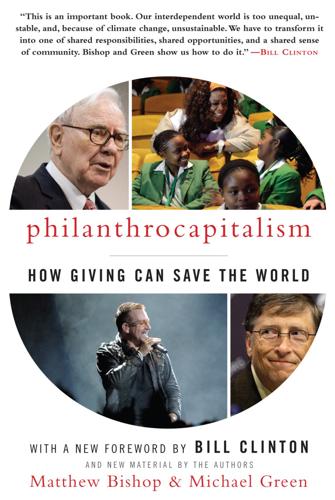
Philanthrocapitalism
by
Matthew Bishop
,
Michael Green
and
Bill Clinton
Published 29 Sep 2008
This conflict of interest, rather than an altruistic concern about global warming, explains venture-capitalist support for the measure, oil companies say.” The proposition was defeated. Khosla had dismissed claims that he was conflicted by promising that if the proposition passed, he would donate every penny he made on his clean-tech investments to charity. “It would have cost me a lot of money. I had no conflict of interest. I had a negative incentive to support the proposition. But I care about where the world is going.” But he found that his pledge to give away any money he would make on clean energy seldom got reported.
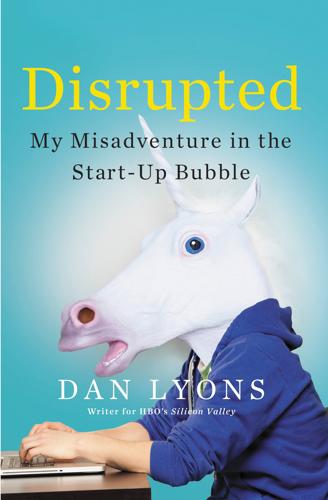
Disrupted: My Misadventure in the Start-Up Bubble
by
Dan Lyons
Published 4 Apr 2016
Doerr joined Kleiner Perkins in 1980 and has been called “the Michael Jordan of venture capital,” a hall-of-fame moneyman, one of the best ever to play the game. Doerr’s big hits include Sun Microsystems, Amazon, Netscape, and Google. But somewhere in the 2000s he seemed to lose his touch, making bad bets on so-called cleantech (renewable energy) start-ups while missing out on big hits like Facebook, LinkedIn, and Tesla. “Doerr made (Kleiner) the gold standard of venture firms” but he “is also largely responsible for the firm’s fall,” tech blog Pando wrote in 2013. Doerr has a degree in electrical engineering from Rice University and an MBA from Harvard.
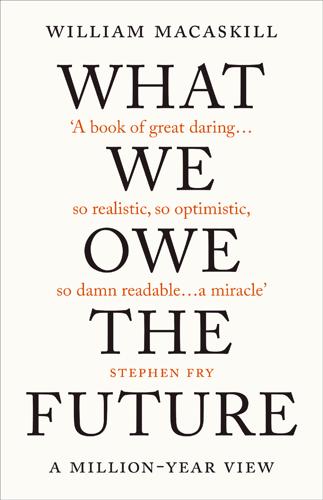
What We Owe the Future: A Million-Year View
by
William MacAskill
Published 31 Aug 2022
This is true for climate change and fossil fuel depletion, where we can draw on huge amounts of relevant research on their physical basis, their socioeconomic effects, and policies for mitigation and adaptation. And, crucially, we have a yardstick we can use to compare different interventions. We know we are winning against climate change if carbon dioxide emissions decline, and the more the better. Each of us can encourage clean-tech innovation through political advocacy or by funding or working for effective nonprofits like Clean Air Task Force and TerraPraxis. Biosecurity and pandemic preparedness is another area where we can do things that are robustly good, like promoting innovation to produce cheap and fast universal diagnostics and extremely reliable personal protective equipment.

The Zero Marginal Cost Society: The Internet of Things, the Collaborative Commons, and the Eclipse of Capitalism
by
Jeremy Rifkin
Published 31 Mar 2014
Sunil Paul and Nick Allen, “Inventing the Cleanweb,” MIT Technology Review, April 2, 2012, http://www.technologyreview.com/news/427382/inventing-the-cleanweb/ (accessed August 17, 2013). 29. Paul Boutin, “The Law of Online Sharing,” MIT Technology Review, January/February 2012. 30. Yuliya Chernova, “New York’s Cleanweb Hackathon Sparks Green Ideas Where Cleantech and IT Intersect,” Wall Street Journal, October 2, 2012, http://blogs.wsj.com/venturecapital/2012/10/02 /new-yorks-cleanweb-hackathon-sparks-green-ideas-where-clean-tech-and-it-intersect/ (accessed September 3, 2013); Martin LaMonica, “Cleanweb Hackers Get Busy with Energy Data,” CNET, January 23, 2012, http://news.cnet.com/8301-11128_3-57363873-54/cleanweb-hackers -get-busy-with-energy-data/ (accessed September 3, 2013). 31.
…
A local mother interviewed by the Guardian described how electricity has transformed the life of the village. She explained that “now the children can study at night. Before, living here was like being in the jungle. Now we feel as though we are actually part of society.”39 Gram Power, which was chosen by NASA as one of the top ten Clean Tech Innovators around the world in 2011, has since worked with ten other villages, installing microgrids, and expects to bring green electricity to an additional 40,000 villagers in 2014.40 It is also looking to other sources of locally available renewable energy, including geothermal heat and biomass.
…
It’s called the Cleanweb, a grassroots movement that took off in 2011 in the United States and countries around the world. Writing on the MIT Technology Review website, Sunil Paul and Nick Allen, two young venture capitalists, describe the Cleanweb vision: We believe the next opportunity is what we call the “cleanweb”—a form of clean tech that takes advantage of the Internet, social media, and mobile communications to alter how we consume resources, relate to the world, interact with each other, and pursue economic growth.28 The Cleanweb Movement, also called energy IT or clean IT, is likely going to drive the paradigm change with lightning speed, leaving conventional business practices at the side of the road, with business leaders wondering how they failed to pick up on the cues—just as was the case when the Internet generation began to create applications and employ social media to share music, videos, news, and information, leaving much of the media and entertainment industries in the dust.
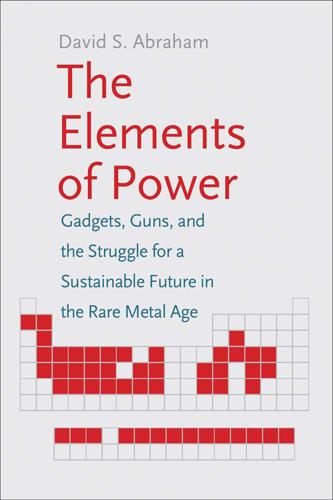
The Elements of Power: Gadgets, Guns, and the Struggle for a Sustainable Future in the Rare Metal Age
by
David S. Abraham
Published 27 Oct 2015
As Alstom notes in December 2013 when putting in the largest wind farm offshore, “Thanks to a permanent-magnet generator, there are less mechanical parts inside the device, making it more reliable and thus helping to reduce operating and maintenance costs.” Alstom, “Alstom Installing World’s Largest Offshore Wind Turbine off the Belgian Coast,” November 2013, http://www.alstom.com/press-centre/2013/11/alstom-installing-worlds-largest-offshore-wind-turbine; Margaret Schleifer, “The Giant Wind Gamble,” Cleantech Investor, 2014, http://www.cleantechinvestor.com/portal/wind-energy/9552-the-giant-wind-gamble.html. 8. The gearboxes convert the 15–20 rpms into higher speeds of 1,800 rpms, which generates electricity. April Nowicki and Peter Bronski, “Are Direct-Drive Turbines the Future of Wind Energy?” Earthtechling, February 2013, http://earthtechling.com/2013/02/are-direct-drive-turbines-the-future-of-wind-energy/; Frank J.
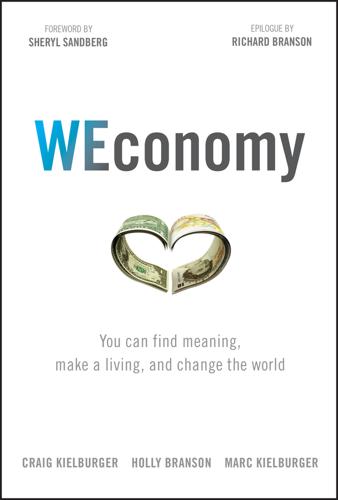
WEconomy: You Can Find Meaning, Make a Living, and Change the World
by
Craig Kielburger
,
Holly Branson
,
Marc Kielburger
,
Sir Richard Branson
and
Sheryl Sandberg
Published 7 Mar 2018
We're not stopping there. The next biggest change for airlines is likely to come in the form of low carbon fuels. Unlike ground energy and ground transport, it's pretty clear that airlines have no alternatives and are going to need liquid fuels for a long time yet. Which is why, in 2011, we partnered with exciting new cleantech company LanzaTech. Their ground-breaking approach makes fuels out of waste industrial gases. Did you know, for example, that many steel mills around the world produce carbon monoxide (CO) as a waste gas—and this is often flared (burned) off as CO2, directly into the atmosphere? LanzaTech captures and recycles the carbon in the waste CO, converting it into fuels via fermentation and other processes.

Stakeholder Capitalism: A Global Economy That Works for Progress, People and Planet
by
Klaus Schwab
Published 7 Jan 2021
They are pressured by activists and clients that demand it from them, or simply following rational concerns that fossil fuel plants will eventually become stranded assets, as former Bank of England governor Mark Carney has warned.38 And entrepreneurs and governments in India and China are starting to take action toward a carbon-light future as well, attracted by the improving affordability of cleantech versus fossil-fuel technologies. In this regard, the World Economic Forum is taking action as well. Ahead of our Annual Meeting in Davos in 2020, Brian Moynihan, chair of the international business council, Feike Sybesma, co-chair of the Alliance of CEO Climate Leaders, and I invited participants to join the “Net-Zero Challenge,”39 committing to achieving greenhouse gas emissions by 2050 or sooner.
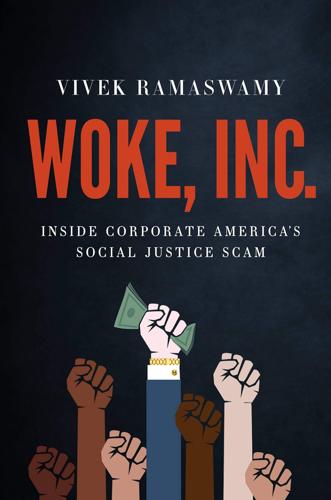
Woke, Inc: Inside Corporate America's Social Justice Scam
by
Vivek Ramaswamy
Published 16 Aug 2021
There was something intoxicating about working at the most elite financial institution in America. For analysts who worked for Goldman in its day, the rush you got from saying you worked there was the equivalent of how today’s graduates feel when they say they work for a “social impact fund” or a “cleantech startup in the Valley.” In the spring of 2006, I was a 20-year-old junior at Harvard College, and I fell for the trick. I joined Goldman Sachs that summer as an intern. By the end of June, I knew that I had made a terrible mistake. People walked around Goldman Sachs with polished black leather shoes, pressed shirts, and Hugo Boss ties.

Stakeholder Capitalism: A Global Economy That Works for Progress, People and Planet
by
Klaus Schwab
and
Peter Vanham
Published 27 Jan 2021
They are pressured by activists and clients that demand it from them, or simply following rational concerns that fossil fuel plants will eventually become stranded assets, as former Bank of England governor Mark Carney has warned.38 And entrepreneurs and governments in India and China are starting to take action toward a carbon-light future as well, attracted by the improving affordability of cleantech versus fossil-fuel technologies. In this regard, the World Economic Forum is taking action as well. Ahead of our Annual Meeting in Davos in 2020, Brian Moynihan, chair of the international business council, Feike Sybesma, co-chair of the Alliance of CEO Climate Leaders, and I invited participants to join the “Net-Zero Challenge,”39 committing to achieving greenhouse gas emissions by 2050 or sooner.
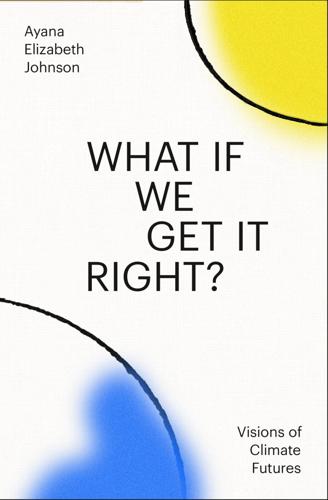
What If We Get It Right?: Visions of Climate Futures
by
Ayana Elizabeth Johnson
Published 17 Sep 2024
—Jason Hickel Your Tax Dollars at Work Interview with Jigar Shah The U.S. government has a long history of investing in emerging technology and startups, whether that’s airplanes, LED lights, the internet, or electric cars. You probably know that the government funds R&D for renewable energy. But you may not know that the government also makes loans to clean-tech startups, providing the financing to get proven technology out of the lab and into the marketplace. If this is surprising to you, ditto. But also, yes please, because we need it. The Department of Energy (DOE) Loan Programs Office was created via the Energy Policy Act of 2005. It was put into that act by the late Senator Pete Domenici of New Mexico, who thought the DOE could play a critical role in helping commercialize energy technology, nuclear in particular.
…
So, how can we insert climate into those strategies? How can they unleash their capital in useful ways? Enter investor education and impact investing. Back in 2012, Régine Clément was serving as the trade commissioner and head of energy and environment at the Canadian Consulate General in New York City. She was running a clean tech accelerator program and noticed that some of the participating entrepreneurs, those funded by family offices, were able to continue to raise capital in the challenging years following the 2008 financial crisis. As Régine recalls it, “Silicon Valley venture investors had left the space. The markets were in disarray.
…
We invest in everything from sustainable forestry and land management, to regenerative agriculture and sustainable aquaculture, to lab-made proteins, to plant-based packaging, to more efficient manufacturing processes and buildings that use less energy and water, to solutions that address food waste, to zero-emission fuels for shipping and aviation, to electric cars and charging stations, to heat pumps for homes. We are starting to look at climate adaptation as well. Ayana: That’s a lot! Régine: We launched as a network of trailblazing family offices that had invested in Clean Tech 1.0 in the late 1990s and early 2000s. They were operating on the assumption that the future would look very different, that climate change would become a material risk and opportunity. The rest of the market wasn’t really seeing this yet. Ayana: Great return on your investment, keeping the entire planet from collapsing.
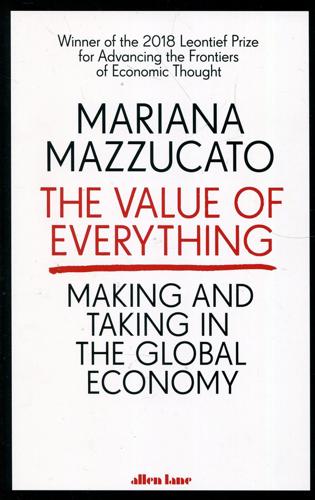
Value of Everything: An Antidote to Chaos The
by
Mariana Mazzucato
Published 25 Apr 2018
Warren Buffett became a lead critic of this policy, admitting that he and most investors don't look at tax, they look at opportunities.12 Indeed, the VC industry, from when it began, followed the opportunities created by direct ‘mission-oriented' government investments in areas like the Internet, biotech, nanotech and cleantech. As we saw in Chapter 5, another crucial success for the NVCA came when it persuaded the US government to relax the interpretation of the ‘prudent man' investment rule (keeping pensions funds out of high-risk investments) to allow pension fund managers to invest up to 5 per cent of pension funds in riskier investments like VC ones.
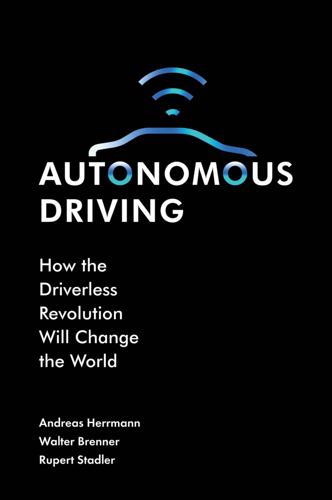
Autonomous Driving: How the Driverless Revolution Will Change the World
by
Andreas Herrmann
,
Walter Brenner
and
Rupert Stadler
Published 25 Mar 2018
It can be summoned using a mobile device, and passengers select their destination using an on-board touchscreen display. It does not require rails, overhead lines or other road modifications. Following comprehensive tests in Switzerland, the United Kingdom and Singapore, it is planned to use it for transporting passengers between Singapore’s Nanyang Technological University and JTC Corporation’s CleanTech Park. The joint venture partners United Technical Services and 2getthere have developed various versions of an automated people mover in recent years. Each version is designed as an on-demand non-stop transportation system between two points on a network with a maximum speed of 40 kilometres per hour (25 miles per hour) and a range of 60 kilometres (37 miles).

The Unwinding: An Inner History of the New America
by
George Packer
Published 4 Mar 2014
“My core goal is to disrupt both the education and the game sectors,” he said, sounding like Peter Thiel. Thiel expressed concern that the company would attract people with a nonprofit attitude, who felt that “it’s not about making money, we’re doing something good, so we don’t have to work as hard. And I think this has been an endemic problem, parenthetically, in the clean-tech space, which has attracted a lot of very talented people who believe they’re making the world a better place.” “They don’t work as hard?” Hsu asked. “Have you thought about how to mitigate that problem?” “So you’re saying that might be a problem just because the company has an educational slant?”

Aerotropolis
by
John D. Kasarda
and
Greg Lindsay
Published 2 Jan 2009
Envisioned as a test bed for every type of renewable energy under the sun—picture solar cells powering personal monorails instead of cars—Masdar is a retort to the unsustainable sprawl of Dubai. “One day, all cities will be built like this,” its backers promised, hinting at a multitrillion-dollar industry to follow. MIT faculty consulted on the Masdar Institute of Science and Technology, while the emirate is trying to coax clean-tech companies to move here with the carrot of $250 million in seed money and the usual lures—no taxes, no oversight, and the great basin of two billion customers within a few hours’ flight. So far, there have been few takers; the opening has been pushed ahead until 2020 and plans for the city are under review.

Wealth and Poverty: A New Edition for the Twenty-First Century
by
George Gilder
Published 30 Apr 1981
Between 1991 and 2000 venture capital outlays in Israel rose sixtyfold, as private-sector investments overwhelmed an initial government subsidy program. A 2008 survey of the world’s venture capitalists by Deloitte & Touche showed that in six key fields—telecom, microchips, software, biotech, medical devices, and cleantech—Israel ranked second only to the United States in absolute terms. In the vital area of innovation in water use and conservation, it decisively led the world. Gaining half its water from desalinization plants, adopting inventive forms of drip irrigation, and recycling 95 percent of its sewage, Israel actually managed to reduce its net water usage by 10 percent since 1948.

The Code: Silicon Valley and the Remaking of America
by
Margaret O'Mara
Published 8 Jul 2019
John Doerr, “Salvation (and profit) in Greentech,” TED2007, March 2007; Marc Gunther and Adam Lashinsky, “Cleanup Crew,” Fortune 156, no. 11 (November 26, 2007). 18. Jon Gertner, “Capitalism to the Rescue,” The New York Times, October 3, 2008. 19. Jerry Hirsch, “Elon Musk’s growing empire is fueled by $4.9 billion in government subsidies,” The Los Angeles Times, May 30, 2015; Sarah McBride and Nichola Groom, “Insight: How cleantech tarnished Kleiner and VC star John Doerr,” Reuters Business News, January 15, 2013. 20. David Streitfeld, “Kleiner Perkins Denies Sex Bias in Response to a Lawsuit,” The New York Times, June 14, 2012; Ellen Huet, “Kleiner Perkins’ John Doerr and Ellen Pao: A Mentorship Sours,” Forbes, March 4, 2015. 21.

Total Recall: My Unbelievably True Life Story
by
Arnold Schwarzenegger
and
Peter Petre
Published 30 Sep 2012
Besides, it’s hard to relate to a polar bear on an ice floe when you’re out of a job, or worried about your health insurance or about educating your kids. I promoted the California Global Warming Solutions Act as good for business—not only large and established businesses but also entrepreneurial businesses. In fact we wanted to create a whole new clean-tech industry that would create jobs, develop cutting-edge technology, and become a model for the rest of the country and the world. Building a consensus was very hard, and the Global Warming Act was far from perfect. There were fierce disagreements internally and with legislators and interest groups.
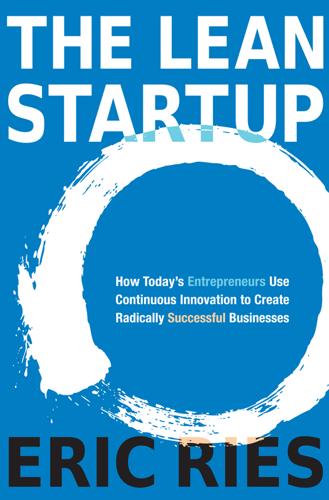
The Lean Startup: How Today’s Entrepreneurs Use Continuous Innovation to Create Radically Successful Businesses
by
Eric Ries
Published 13 Sep 2011
It is a principled approach to new product development. The only way to make sense of its recommendations is to understand the underlying principles that make them work. As we’ll see in later chapters, the Lean Startup model has been applied to a wide variety of businesses and industries: manufacturing, clean tech, restaurants, and even laundry. The tactics from the IMVU story may or may not make sense in your particular business. Instead, the way forward is to learn to see every startup in any industry as a grand experiment. The question is not “Can this product be built?” In the modern economy, almost any product that can be imagined can be built.
…
Remember that although we write the feedback loop as Build-Measure-Learn because the activities happen in that order, our planning really works in the reverse order: we figure out what we need to learn and then work backwards to see what product will work as an experiment to get that learning. Thus, it is not the customer, but rather our hypothesis about the customer, that pulls work from product development and other functions. Any other work is waste. Hypothesis Pull in Clean Tech To see this in action, let’s take a look at Berkeley-based startup Alphabet Energy. Any machine or process that generates power, whether it is a motor in a factory or a coal-burning power plant, generates heat as a by-product. Alphabet Energy has developed a product that can generate electricity from this waste heat, using a new kind of material called a thermoelectric.
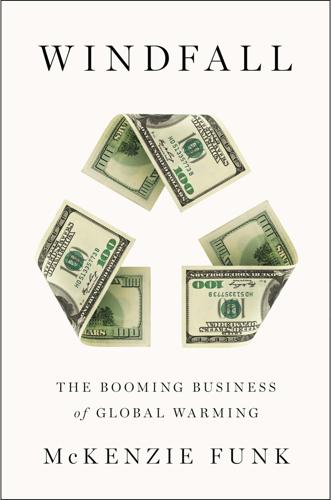
Windfall: The Booming Business of Global Warming
by
Mckenzie Funk
Published 22 Jan 2014
When I asked Fulton how the bank planned to capitalize on rising sea levels, he mentioned a small play in a Dutch dredging company, Royal Boskalis, which had just rebuilt an island in the Maldives inundated by the 2004 tsunami. “Where are you going to get seawall expertise but from the Dutch?” he asked. Other climate investors told a similar story. They bought clean tech, green tech, the building blocks of the new, low-carbon economy—but they were also starting to hedge. In London, the Schroder Global Climate Change Fund was investing in Russian farmland—cheap, fertile soil suddenly made dear by milder winters and drought-fueled global food crises—and its manager was taking the logic a step further, buying stock in supermarket chains such as Carrefour and Tesco.
…
It meant Research, Design, and Manufacturing, and the site was being retooled as a futuristic campus for research institutes and technical universities attempting to solve the problems of the world. In adjacent buildings, students were perfecting zero-emissions go-karts, conversion kits for hydrogen-powered buses, and the Sustainable Dance Club, where the power of dancers’ footwork kept the lights on. “We’ll be a center for water tech and for clean tech—the Silicon Valley of the lowlands,” he continued. “People will come even when sea levels are rising.” A planner from the San Francisco Bay Area raised his hand. “But why invest here rather than somewhere else, like Singapore, Shanghai, or the Silicon Valley?” he asked. The port manager smiled.

Apocalypse Never: Why Environmental Alarmism Hurts Us All
by
Michael Shellenberger
Published 28 Jun 2020
John van Zalk and Paul Behrens, “The spatial extent of renewable and non-renewable power generation: A review and meta-analysis of power densities and their application in the US,” Energy Policy 123 (2018): 83–91, https://doi.org/10.1016/j.enpol.2018.08.023. 97. Ibid., 83–91. 98. Jesse Jenkins, Mark Moro, Ted Nordhaus et al., Beyond Boom & Bust: Putting Clean Tech on a Path to Subsidy Independence, Breakthrough Institute, April 2012, https://s3.us-east-2.amazonaws.com/uploads.thebreakthrough.org/articles/beyond-boom-and-bust-report-overview/Beyond_Boom_and_Bust.pdf, 18. 99. Tom Jackson, “PacificCorp Sues to Block Release of Bird-Death Data at Wind Farms,” Sandusky Register, November 17, 2014, http://www.sanduskyregister.com. 100.
…
John Doerr, “Salvation (and Profit) in Greentech,” TED2007, March 2007, https://www.ted.com/talks/john_doerr_salvation_and_profit_in_greentech/transcript?language=en. 85. Michael Shellenberger and Adam Werbach, “It’s the Oil Economy, Stupid,” SF Gate, March 10, 2003, https://www.sfgate.com. 86. Michael Shellenberger et al., “Beyond Boom and Bust: Putting Clean Tech On a Path To Subsidy Independence,” Brookings, April 12, 2012, https://bloomberg.com. Ira Boudway, “The 5 Million Green Jobs That Weren’t,” Bloomberg Businessweek, October 12, 2012, https://www.bloomberg.com. 87. Peter Schweitzer, Throw Them All Out: How Politicians and Their Friends Get Rich off Insider Stock Tips, Land Deals, and Cronyism That Would Send the Rest of Us to Prison (New York: Mariner Books, 2012), 96. 88.
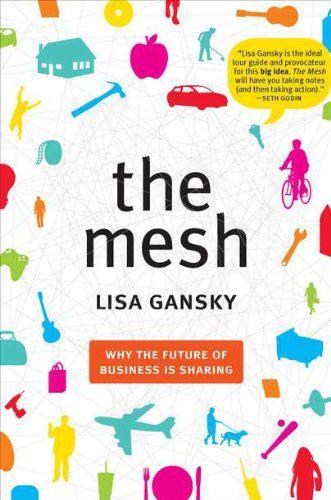
The Mesh: Why the Future of Business Is Sharing
by
Lisa Gansky
Published 14 Oct 2010
Simple math suggests that in order to have a peaceful, prosperous, and sustainable world, we are going to have to do a more efficient job of sharing the resources we have. Pragmatic and visionary businesspeople and governments understand this, and are reorienting themselves accordingly. The companies, cities, and countries that get there first will define business success in the early twenty-first century. That’s why the so-called clean tech and renewable energy sectors are hot on several continents. Or why policy experts are debating the best way to develop a “smart grid” that will transform the way energy is generated and shared. Finally, world population growth has sped up the trend toward greater urban density, which favors Mesh businesses.
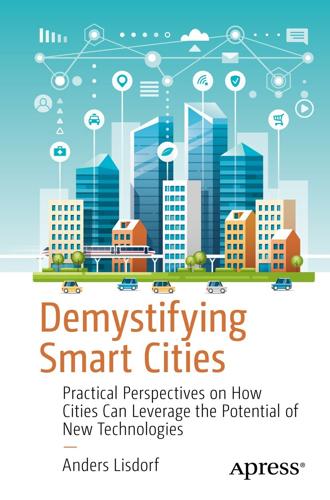
Demystifying Smart Cities
by
Anders Lisdorf
They are also to some degree similar to researchers since they sponsor research and study different aspects of smart cities. Nongovernmental organizations – These resemble the supranational organizations, but they don’t necessarily have any support from any nations. They are typically devoted to one particular aspect like energy, clean tech, or sustainability. They can be an important resource for knowledge and also funding. Philanthropies – There are some philanthropic organizations whose primary purpose is to fund and sponsor rollout of smart city solutions. They typically have their own process and grants through which it is possible to get funding by submitting projects.
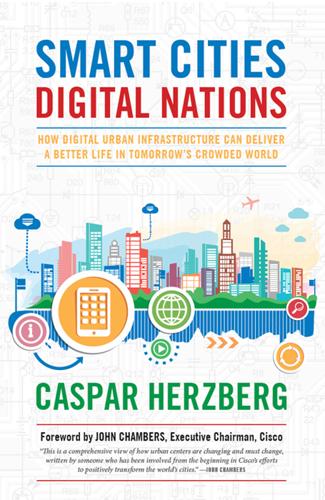
Smart Cities, Digital Nations
by
Caspar Herzberg
Published 13 Apr 2017
As in Chengdu, a primary step of the collaboration was to build out an existing industrial park that could act both as a model for S+CC services and provide support for city services as built out network infrastructure. In addition, Cisco was expected to facilitate the manufacturing of telecommunications products within Chongqing; considering the city’s extensive infrastructure and advantageous trade position, the forecasts for telecom business were bullish. Tapping into the national interest in clean tech, Cisco also pledged to develop a Joint Laboratory for Green Technologies and an Innovation Center. Like the Shanghai Expo to come, these centers were meant to be launching pads for ideas generated both within Cisco and by local partnerships. The objective was to promote the company’s technology through example and interaction until the city was committed to implementing the network infrastructure the team was laying down in TSP and Songdo.
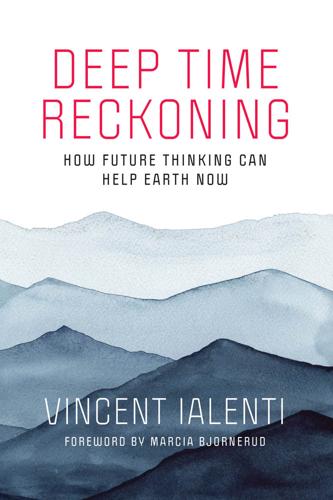
Deep Time Reckoning: How Future Thinking Can Help Earth Now
by
Vincent Ialenti
Published 22 Sep 2020
Just over 5 percent are part of Finland’s Swedish-speaking linguistic minority. Finland is also home to Saami, Roma, Estonian, and Russian minorities, plus refugee populations from Somalia, Iraq, Afghanistan, and elsewhere. It is known for its telecommunications, electronics, metals, wood, engineering, electronics, clean tech, and information technology industries. About 30 percent of Finland’s energy production comes from its domestic nuclear power plants. To conduct fieldwork, I took Finnish language courses, immersed myself in Northern European life, conversed with Safety Case experts in person, read their technical reports, and heard out their critics.

The Switch: How Solar, Storage and New Tech Means Cheap Power for All
by
Chris Goodall
Published 6 Jul 2016
Artificial photosynthesis In the next few years we will also see increased emphasis on directly using solar energy to get living organisms to produce useful precursors to standard liquid fuels – a process that is sometimes called ‘artificial photosynthesis’. Many people talk of the need to increase investment in clean tech research and improving artificial photosynthesis should be an important destination of such cash. PV technologies already have enough momentum behind them and large amounts of risk money should instead be flooded into ‘sunlight to liquids’ research. A scanning electron microscope photograph of a nanowire array populated by Sporomusa Ovata bacteria.
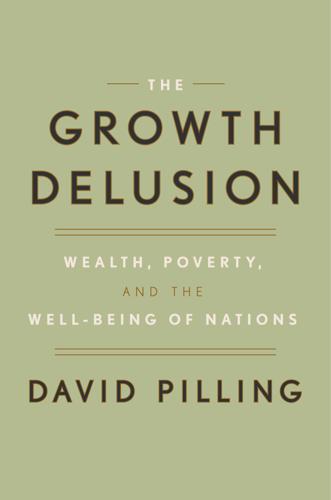
The Growth Delusion: Wealth, Poverty, and the Well-Being of Nations
by
David Pilling
Published 30 Jan 2018
He listed anti-desertification campaigns, tree planting, an environmental transparency law, adoption of carbon targets, eco-services compensation, eco accounting, caps on water use, lower economic growth targets, the Twelfth Five-Year Plan, debate and increased monitoring of PM2.5, and investments in renewables and clean tech. Of course that didn’t mean China was any cleaner. During the same nine years the size of China’s economy had quadrupled, there were five times as many cars on the roads, and carbon emissions had doubled and surpassed those of the US. The country now accounted for almost half the coal burned on the planet.
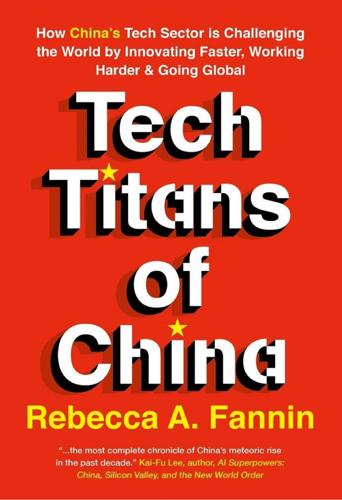
Tech Titans of China: How China's Tech Sector Is Challenging the World by Innovating Faster, Working Harder, and Going Global
by
Rebecca Fannin
Published 2 Sep 2019
He’s running that lap now as some Qiming funds bring in investment returns of around 30 percent in the top echelon of venture firms investing in China. Qiming manages more than $4.3 billion across 12 funds—seven US dollar funds and five RMB funds—and has invested in more than 280 young, fast-growing, and innovative companies in clean tech, health care, the internet, and information technology. More than 50 of them have been acquired or gone public in the United States, China, or Hong Kong, including smartphone maker Xiaomi and on-demand food delivery and services app Meituan. Unlike many other venture firms, Qiming partners specialize in sectors.
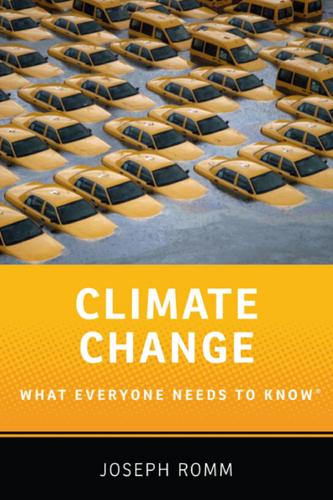
Climate Change
by
Joseph Romm
Published 3 Dec 2015
The History of the Electric Car. Retrieved from energy.gov/articles/history-electric-car; Romm, J., & Frank, A. (2006, April). Hybrid vehicles gain tractionm. Scientific American; U.S. Department of Energy. (2014, May 30). Electric vehicle manufacturing taking off in the U.S; U.S. Department of Energy. Clean tech now. October 2013; Parkinson, G. (2014, August 21). Why EVs will make solar viable without subsidies. Retrieved from Reneweconomy.com.au; Hummel, P., et al. (2014, August 20). Will solar, batteries and electric cars re-shape the electricity system? UBS report. Retrieved from knowledge.neri.org.nz/assets/uploads/files/270ac-d1V0tO4LmKMZuB3.pdf; Lienert, P. (2015, March 26).
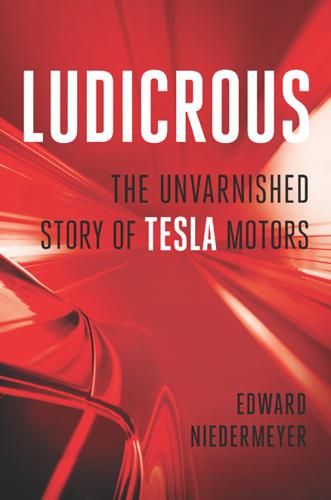
Ludicrous: The Unvarnished Story of Tesla Motors
by
Edward Niedermeyer
Published 14 Sep 2019
Reuters, May 20, 2010. https://www.reuters.com/article/us-tesla-toyota/toyota-gets-tesla-stake-tesla-gets-toyota-factory-idUSTRE64J70O20100521 77Panasonic invested $30 million in Tesla: “Panasonic Invests $30M in Tesla.” New Statesman America, November 5, 2010. https://www.newstatesman.com/energy-and-clean-tech/2010/11/panasonic-battery-tesla 77the two firms began to partner on the next generation of EV batteries: Poornima Gupta. “Tesla, Panasonic partner on electric car batteries.” Reuters, January 7, 2010. https://www.reuters.com/article/tesla-panasonic/tesla-panasonic-partner-on-electric-car-batteries-idUSN0721766720100107 77culminating in a 2014 commitment to build a massive joint plant: Tesla Motors Press Release.

Chokepoints: American Power in the Age of Economic Warfare
by
Edward Fishman
Published 25 Feb 2025
Its dominance of the market for critical minerals, for instance, stems less from its natural-resource bounty than its expertise in processing minerals. While it retains a sizable lead in that area, the technical challenges of mineral processing are not so complex as to keep others from catching up over time, especially when boosted by generous state subsidies for clean tech such as those included in the U.S. Inflation Reduction Act. At least for several years to come, however, the clean-energy industry will offer chokepoints that China can exploit for economic warfare. Among other things, Beijing could use this advantage to deter the West from tightening the “technology blockade.”
…
GO TO NOTE REFERENCE IN TEXT expertise in processing minerals: Aaron Steckelberg, “The Underbelly of Electric Vehicles,” The Washington Post, April 27, 2023, www.washingtonpost.com/world/interactive/2023/electric-car-batteries-geography. GO TO NOTE REFERENCE IN TEXT subsidies for clean tech: Bentley Allan, Noah Gordon, and Cathy Wang, “Friendshoring Critical Minerals: What Could the U.S. and Its Partners Produce?” Carnegie Endowment for International Peace, May 3, 2023, carnegieendowment.org/2023/05/03/friendshoring-critical-minerals-what-could-u.s.-and-its-partners-produce-pub-89659; James Temple, “US Minerals Industries Are Booming.
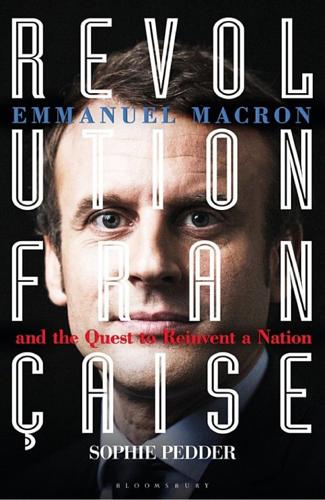
Revolution Française: Emmanuel Macron and the Quest to Reinvent a Nation
by
Sophie Pedder
Published 20 Jun 2018
Five months later, it was also in Lyon, at the Palais des Sports on 4 February 2017, that the candidate held his most electric campaign rally in a hall so packed that hundreds of supporters were turned away at the door. Collomb, like Macron, did not shy away from backing business in his city either. Lyon retains a heavy industrial base, but has built new strengths in robotics, life sciences and clean tech. New office space is being opened in the city every year. With 17 Michelin-star restaurants, well-ranked business and engineering schools, a freshly scrubbed Opera House, and quick links to the Alps and the Mediterranean coast, as well as to Paris, Lyon is a place that is comfortable with globalization and modernity.
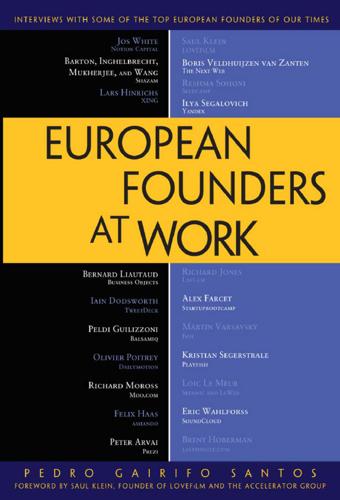
European Founders at Work
by
Pedro Gairifo Santos
Published 7 Nov 2011
It's not unusual for someone to start a company. It's not unusual for someone's family member to start a company. Everyone knows someone who knows a VC. There are huge American companies from Cisco to IBM to EMC to HP to Google to eBay that have big, mainstream R & D centers here. Not like outsourced, offshore R & D but cutting-edge R & D. Clean tech, life sciences, medical devices. You have world leadership here. Very educated country. Highest number of patents per head of population. It's sort of like Silicon Valley as a country. Santos: How do you use your entrepreneurship skills in the investment world? Klein: We haven't talked much about investing, but this isn't a book so much about that.

The Industries of the Future
by
Alec Ross
Published 2 Feb 2016
In the same way that entrepreneurs, businesses, and investors who engaged in China and India ten to twenty years ago were able to build big businesses, people who can look around the world and see and understand the opportunity in the next wave of high-growth markets are those who will realize the greatest gains. The time Sheel spent in places like Nairobi was seminal for him, and as he invests in the hottest of hotshot early-stage deals in Silicon Valley—in fields including cryptocurrency, clean tech, consumer Internet, and mobile—he’s also doing something that only a tiny percentage of Silicon Valley investors are doing: investing in places that are today’s frontier markets, like Kenya, Uganda, and Bangladesh. As those markets develop, those like Sheel who are educated about the market will have a head start toward developing the relationships and partnerships to source quality investments.

Brotopia: Breaking Up the Boys' Club of Silicon Valley
by
Emily Chang
Published 6 Feb 2018
Sequoia stayed small and lean, making early investments in some of tech’s biggest hits, such as YouTube, Airbnb, and WhatsApp. Most founders dream of getting a check signed by Sequoia and the contacts and bragging rights that come with it. Kleiner, on the other hand, changed its approach, scaling up in staff size and widening its investment focus to include new energy and clean tech—changes made largely at the behest of Doerr. Among the slew of new partners hired were big names such as former vice president Al Gore, the famed former Wall Street analyst Mary Meeker, and the esteemed doctor Beth Seidenberg; the new junior partners included a number of promising women. Doerr continued to push recruiters hard to find more women, even when other partners didn’t agree it should be a top priority.
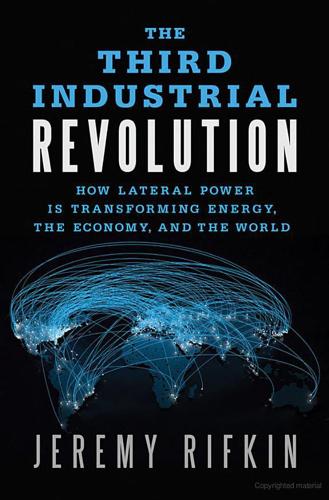
The Third Industrial Revolution: How Lateral Power Is Transforming Energy, the Economy, and the World
by
Jeremy Rifkin
Published 27 Sep 2011
As cited in McNichol, D. (2006). The Roads that Built America, p. 127. 37.Anthony Caserta, FHWA tunnel engineer [Interview by D. McNichol]. (2003, April); FHWA Bridge Table, December 2002 as cited in McNichol, D. (2006). The Roads that Built America, p. 11. 38.Pernick, Ron and Wilder, Clint (2007). The Clean Tech Revolution: The Next Big Growth and Investment Opportunity, p. 280. 39.DeSanctis, G., & Fulk, J. (1999). Shaping Organization Form: Communication, Connection, and Community. Thousand Oaks, CA: Sage, p. 105. CHAPTER 5 1.Mallet, V. (2011, March 27). Spain: Indignant in Iberia. Financial Times.
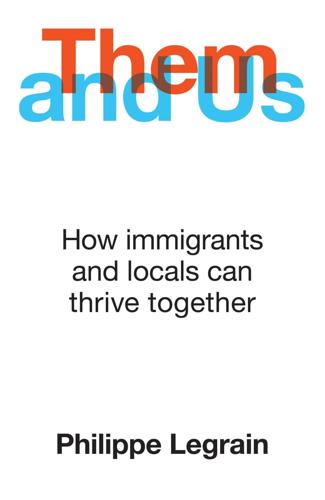
Them and Us: How Immigrants and Locals Can Thrive Together
by
Philippe Legrain
Published 14 Oct 2020
Having citizens abroad tends to boost trade, generate investment and spread ideas back home. Vinod Khosla studied electrical engineering in India before moving to the US for his postgraduate studies. In 1982 he co-founded Sun Microsystems, a computer company that was eventually bought by Oracle, and then became a venture capitalist. Now a billionaire, his Khosla Ventures invests in clean tech and IT start-ups. He has also established Khosla Labs, a start-up incubator and innovation lab in Bangalore that seeks to solve large-scale problems in India using technology and entrepreneurial zeal.60 With half of the Indian population unbanked, it is working on mobile solutions to make financial payments possible anytime, anywhere.
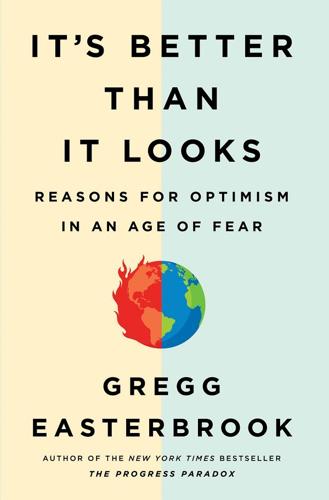
It's Better Than It Looks: Reasons for Optimism in an Age of Fear
by
Gregg Easterbrook
Published 20 Feb 2018
In 2017, researchers led by Zeke Hausfather of the University of California at Berkeley showed that sea-surface temperatures have entered a cycle of increase. That suggests the oceans will be relatively warm for at least many decades to come—the phase of relatively cool waters lasted more than a century—even if greenhouse emissions yield to clean tech. THE PROGRESSION OF ENERGY SOURCES from wood and agricultural wastes (very dirty in terms of both smog and carbon dioxide) to coal (cleaner than wood but still dirty) to hydroelectric dams (clean but approaching maximum output in most of the world) to petroleum (medium dirty) to natural gas (clean in smog terms but still contributing to the greenhouse effect) to uranium (very clean but very expensive) to solar and wind (very clean and potentially not expensive) shows society moving in the green direction.

The Long History of the Future: Why Tomorrow's Technology Still Isn't Here
by
Nicole Kobie
Published 3 Jul 2024
Described at its launch as the first zero-carbon city, it would show off sustainable technologies from desalination plants to solar panels and even a 45m (100ft)-tall tower to pull cool winds down into the inevitably hot streets, with walls around the city to block the desert winds and noise from the airport next door. Masdar City was a smart city with the emphasis on sustainability. As part of the city’s role as an urban lab for clean tech, an autonomous personal pod system would ferry people around to prevent car use, and a computerised navigation system built into pavements would help walkers find their way. Construction began in 2008, and Foster + Partners picked up several sustainability awards for the design. ‘We want to position ourselves as thinkers and progressives,’ Sultan Al Jaber, CEO of the company behind Masdar, told reporters at the time.

Mastering Private Equity
by
Zeisberger, Claudia,Prahl, Michael,White, Bowen
,
Michael Prahl
and
Bowen White
Published 15 Jun 2017
The categories that firms invest in, and how they describe them, also vary widely. Foundry Group uses a thematic approach that we pioneered in 2007. Other firms use a sector approach, which has been around for many years. Some firms invest only in software and Internet-related companies, while others invest in clean tech or life sciences. Once again, the configuration of the approaches can be combined in many different, and occasionally unique, ways within a VC firm. Once you realize you are dealing with many different archetypes of individual VCs with widely varying skills and experience levels, and the configuration of these archetypes into a firm is similar to how characters combine and interact in a battle in D&D, you realize that there is no generic VC or VC firm.

The Future Is Asian
by
Parag Khanna
Published 5 Feb 2019
Countries climbing toward middle-income status such as India and the Philippines are grabbing all possible industrial activity for their workers. As India allows greater foreign ownership in aviation, rail, finance, and construction, it has become the world’s top destination for greenfield foreign investment, with more than $60 billion per year pouring into transport, information technology, electronics, and clean tech. The twin Invest India and Make in India campaigns direct investment into manufacturing and are coupled with a Skill India campaign that aims to train more than 2 million new labor force entrants every year for various industries. Importantly, in India services already represent 55 percent of GDP and industry only 30 percent.

Masters of Management: How the Business Gurus and Their Ideas Have Changed the World—for Better and for Worse
by
Adrian Wooldridge
Published 29 Nov 2011
Having spent the postwar era climbing up the “value chain,” from manufacturing to services and from trade to finance, the government thinks that it is confronted with perhaps its biggest test yet—creating knowledge industries and producing companies that can commercialize intellectual breakthroughs. Singapore has invested heavily in digital media, bioengineering, clean tech, and water purification, creating huge incubators and “kidnapping” foreign scientists with huge pay packets. It has also, like both Israel and Denmark, created a public venture capital fund that has in turn brought in lots of private venture capital. More than 5 percent of Singapore-based companies are backed by venture capital.

Cities Under Siege: The New Military Urbanism
by
Stephen Graham
Published 30 Oct 2009
Military simulations are also helping to produce US cities in another, more direct, way: generating them now takes up large swaths of the US economy, especially in high-tech metropolitan areas. Many of the much-vaunted high-tech suburban hot spots that house what Richard Florida has called the ‘creative class’115 of the US – places such as Washington, DC‘s ‘Beltway’, North Carolina’s ‘Research Triangle’, Florida’s ‘High Tech Corridor’, or San Diego’s ‘clean tech cluster’ – are in fact heavily sustained by the production of symbolic violence against both US central and Arab cities. Being not only the foundries of the security state but also the sites of the most militarized and corporatized research universities, these locations are where the vastly profitable and rapidly growing convergence between electronic games and military simulation is being forged.

Wool Omnibus Edition
by
Hugh Howey
Published 5 Jun 2012
Holston didn’t need to look to know someone was likely watching. “Bear with me,” Nelson said. “I have to do it by the book.” Holston nodded, but he knew there wasn’t any “book.” Of all the mystic oral traditions passed through silo generations, none matched the cult-like intensity of the suit makers and the cleaning techs. Everyone gave them their space. The banned might do the physical cleaning, but these were the people who made it possible. These were the men and women who maintained the view to that wider world beyond the silo’s stifling confines. Nelson placed the helmet on the bench. “You got your scrubbers here.”
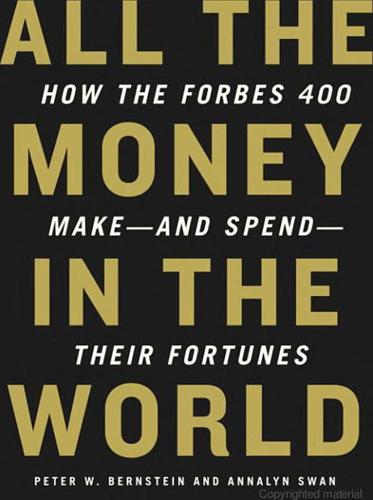
All the Money in the World
by
Peter W. Bernstein
Published 17 Dec 2008
“Energy is subject to the same sort56 of scientific breakthroughs, innovation, and entrepreneurial efforts that have characterized Silicon Valley’s impact in microprocessors, PCs, biotechnology, telecommunications, and the Internet,” he told Time magazine. “There is zero question in my mind we can replace all the petroleum used in cars.” Khosla, Bill Gates, and Sir Richard Branson of Virgin Airways are building refineries to wring oil from corn. Khosla’s portfolio of twenty-four clean tech start-ups also includes companies experimenting with fuel from waste cellulose and electricity from solar thermal sources: For example, Range Fuels of Colorado, which he founded, plans to turn wood chips, agricultural waste, municipal sewage, and pig manure into ethanol. “I’m going after green and ‘cheaper than fossil’ technologies,” Khosla argues from his Menlo Park, California, office, “because it’s the only way to solve the scale problem and to attract the hundreds of billions—or even trillions—of dollars necessary to make a difference in global warming.”
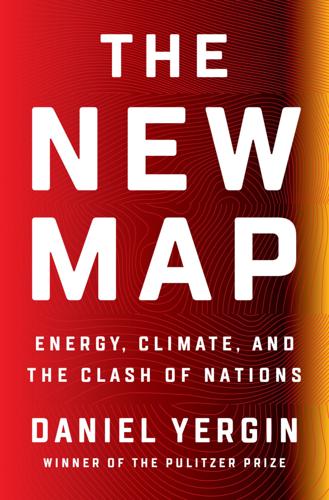
The New Map: Energy, Climate, and the Clash of Nations
by
Daniel Yergin
Published 14 Sep 2020
Tesla’s idea was to package thousands of these cells into a battery pack. By this time, the door had already opened to the use of electricity in autos, owing to the uptake of hybrids, which combined an electric motor with a gasoline engine, stretching out the miles per gallon.2 Meanwhile, interest was growing in “clean tech” and renewables among Silicon Valley venture capital firms, in response to rising concern about climate change and the conviction that much money could potentially be made from them. That made it easier for Tesla to raise investment. The rapid rise in oil prices in those years reinforced the fears of “peak oil”—running out of petroleum—which made non-gasoline-powered transportation look increasingly interesting.
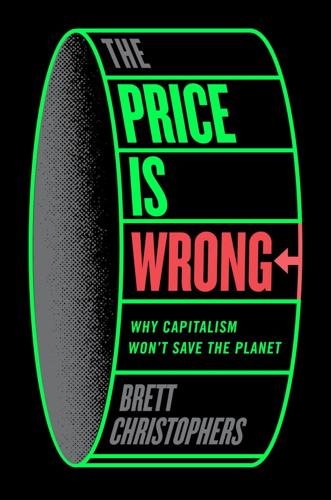
The Price Is Wrong: Why Capitalism Won't Save the Planet
by
Brett Christophers
Published 12 Mar 2024
Pickard, ‘UK Faces Legal Action over Windfall Tax on Energy Companies’, Financial Times, 28 December 2022. 66 Bullard, ‘UK Windfall Tax on Renewables Could Hurt Decarbonization Efforts’. 67 Cited in B. Jopson, ‘US Beats EU as Magnet for Green Investment, Says Iberdrola’, Financial Times, 9 November 2022. 68 In ibid. 69 A. Chu, D. Bower and A. Williams, ‘US Touts Biden Green Subsidies to Lure Clean Tech from Europe’, Financial Times, 23 January 2023. 70 See B. Christophers, ‘Fossilised Capital: Price and Profit in the Energy Transition’, New Political Economy 27 (2022), pp. 153–6. 71 Common Wealth, ‘BP’s Q4 Results’, 7 February 2023, common-wealth.co.uk. 72 See O. Milman, ‘Shell’s Actual Spending on Renewables Is Fraction of What It Claims, Group Alleges’, Guardian, 1 February 2023. 73 ‘Spending on Oil and Gas Dividends Hits 15-year High’, Financial Times, 4 June 2023. 74 ‘Renewables: Big Oil Is Missing the Opportunity High Profits Create’, Financial Times, 27 October 2022. 75 Ibid. 11 Roads to Nowhere 1 Federal Energy Regulatory Commission, ‘Order Approving Stipulation and Consent Agreement’, Docket #s IN11-8-000 and IN13-5-000, 30 July 2013, ferc.gov, p. 6. 2 Ibid., p. 6. 3 Ibid., p. 1. 4 B.

2312
by
Kim Stanley Robinson
Published 22 May 2012
They’re freshwater lakes; the water from the Med has been progressively desalinated on its way inland, and the recovered salts have been bonded with fixatives to make excellent white bricks and roof tiles. White roof tiles covered by translucent photovoltaic film have been used for all new construction since the Accelerando, and retrofitted onto many older roofs as well; these days when seen from space, cities look like patches of snow. But clean tech came too late to save Earth from the catastrophes of the early Anthropocene. It was one of the ironies of their time that they could radically change the surfaces of the other planets, but not Earth. The methods they employed in space were almost all too crude and violent. Only with the utmost caution could they tinker with anything on Earth, because everything there was so tightly balanced and interwoven.
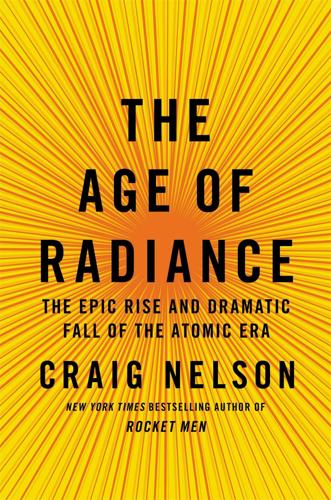
The Age of Radiance: The Epic Rise and Dramatic Fall of the Atomic Era
by
Craig Nelson
Published 25 Mar 2014
Crossroads: A Journal of Nagasaki History and Culture (Summer 1995). http://www.uwosh.edu/faculty_staff/earns/olivi.html. Edge, Dan, writer, producer, and director. “Inside Japan’s Nuclear Meltdown.” Frontline, February 28, 2012. Edwards, Paul N. “Entangled Histories: Climate Science and Nuclear Weapons Research.” Bulletin of the Atomic Scientists, July 13, 2012. Eilperin, Juliet. “The Clean Tech Meltdown.” Wired, February 2012. Einstein, Albert. “Space-Time.” Encyclopædia Britannica, 1926. Eisenhower, Dwight D. “Atoms for Peace.” Presented at the 470th Plenary Meeting of the United Nations General Assembly, Tuesday, December 8, 1953, at 2:45 p.m. Elliott, Justin. “Japan’s Nuclear Danger Explained.”

Thank You for Being Late: An Optimist's Guide to Thriving in the Age of Accelerations
by
Thomas L. Friedman
Published 22 Nov 2016
Company researchers said the advance represented the most significant change in the materials used to manufacture silicon chips since Intel pioneered the modern integrated-circuit transistor more than four decades ago.” For all of the above reasons, 2007 was also “the beginning of the clean power revolution,” said Andy Karsner, the U.S. assistant secretary of energy for efficiency and renewable energy from 2006 to 2008. “If anyone in 2005 or 2006 told you their predictive models captured where clean tech and renewable energy went in 2007 they are lying. Because what happened in 2007 was the beginning of an exponential rise in solar energy, wind, biofuels, LED lighting, energy efficient buildings, and the electrification of vehicles. It was a hockey stick moment.” Last but certainly not least, in 2007 the cost of DNA sequencing began to fall dramatically as the biotech industry shifted to new sequencing techniques and platforms, leveraging all the computing and storage power that was just exploding.
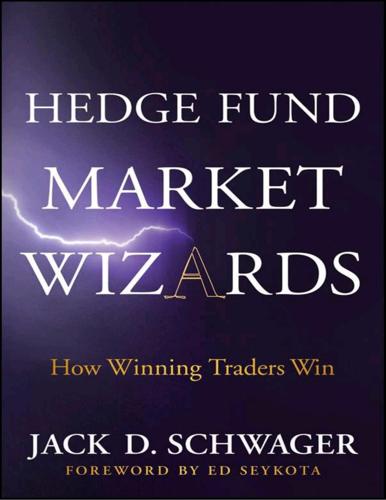
Hedge Fund Market Wizards
by
Jack D. Schwager
Published 24 Apr 2012
That is a way of bridging myself to a world that doesn’t have me only in front of my screens. What are your goals? I want to continue to learn. I want to be a great businessman. I am involved in a lot of other businesses—outside investments that I have made. What other businesses are you involved in? Video games, clean tech, movie postproduction, and health care. How does trading fit into it? Trading is my source of funds. How do you see your trading evolving over time? I really can’t imagine myself sitting in front of the screens for the rest of my life. Wouldn’t it be hard to step away from something that you are so good at?
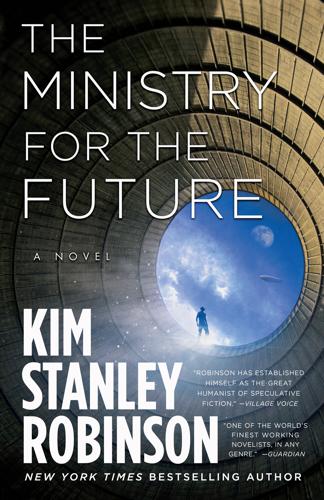
The Ministry for the Future: A Novel
by
Kim Stanley Robinson
Published 5 Oct 2020
Fairly quickly there emerged specialized shipyards devoted to taking in container ships and cutting them up, each providing the raw material for five or ten or twenty smaller ships, all of which were propelled by clean power in ways that made them as fast as the diesel-burners had been, or even faster. These changes included going back to sail. Turned out it was a really good clean tech. The current favored model for new ships looked somewhat like the big five-masted sailing ships that had briefly existed before steamships took over the seas. The new versions had sails made of photovoltaic fabrics that captured both wind and light, and the solar-generated electricity created by them transferred down the masts to motors that turned propellers.

Elon Musk
by
Walter Isaacson
Published 11 Sep 2023
They helped finance their former colleague David Sacks—the friend who took notes for Antonio Gracias in law school—when he produced the satirical movie Thank You for Smoking. Thiel teamed up with two other PayPal alums, Ken Howery and Luke Nosek, to form the Founders Fund, which invested mainly in internet startups. Thiel was, he says, “categorically skeptical about clean tech,” so the fund had not invested in Tesla. Nosek, who had become close to Musk, suggested that they invest in SpaceX. Thiel agreed to a conference call with Musk to discuss the idea. “At one point I asked Elon whether we could speak to the company’s chief rocket engineer,” Thiel says, “and Elon replied, ‘You’re speaking to him right now.’ ” That did not reassure Thiel, but Nosek pushed hard to make the investment.

This Changes Everything: Capitalism vs. The Climate
by
Naomi Klein
Published 15 Sep 2014
Four hundred billion dollars in new investments could stimulate real climate solutions, help create the market for further investments, encourage policy change and sustain financial returns long into the future.”20 Already, the group of foundations and wealthy individuals that has joined the fossil fuel divestment movement (see page 357) has taken the additional step of moving the funds that had been profiting from fossil fuel companies and reinvesting them in the clean tech sector (the intiative has become known as “Divest-Invest”). Some colleges are taking a similar approach. As economic analysts Jeremy Brecher, Brendan Smith, and Kristen Sheeran note, “Duke University in North Carolina has invested $8 million in the Self-Help Credit Union, in part to fund affordable green housing.

On the Edge: The Art of Risking Everything
by
Nate Silver
Published 12 Aug 2024
“Tesla and this rocket company, SpaceX—they were both extremely risky schemes,” said Thiel, whose firm, Founders Fund, passed on an early investment in Tesla—although it did invest in SpaceX. “How would one assess them probabilistically? They probably were not going to work. And the Tesla thing looked like sort of a fake clean tech company,” Thiel said. SpaceX was even more risky. The company’s first three rocket launches failed, and Elon had to scrounge to get money for a fourth one. That fourth try was a charm—“That was freakin’ awesome,” a relieved Musk told his Falcon 1 team. He’d expected that another crash would have ruined him.